






















And while during the year we have been pushed to our limits by Covid-19 restrictions, labour shortages, climate events, and the government’s multiple and uncoordinated policy changes, there have actually been some surprisingly good wins for horticulture, in amongst all this craziness.
Getting the Recognised Seasonal Employer (RSE) scheme numbers increased to 19,000 was a fantastic outcome in an environment where the unions were trying their hardest to discredit the scheme, and when some Pacifica Nations were wanting to put the handbrakes on sending their workers to New Zealand. A huge amount of effort went into achieving this outcome, Horticulture New Zealand working closely with product groups – effort well invested and appreciated.
We also once again have Working Holiday Visas being issued. While no one is expecting we will reach preCovid levels in 2023, we can hopefully put a dent in the seasonal shortages, especially if we work together and focus on attracting workers here.
Something we may have forgotten is Country of Origin labelling, which came into effect in February, making it mandatory for businesses to disclose where amongst other things fresh fruit and vegetables come from. This is so consumers have a choice if they wish to support local growers or purchase imported produce.

The requirement to disclose country of origin applies to single-ingredient fruit, vegetables, fish, seafood, and meat that is no more than minimally processed. From May 2023, the regulations will also apply to frozen food in the same categories.
The National Policy Statement for Highly Productive Land was released in September. It will provide clear guidance to councils about what they need to be doing to protect elite soils so that they can remain productive.
Another win during the year has been the development of the Aotearoa Horticulture Action Plan, something growers may not have huge visibility of. The development of the action plan was horticulture industry-led and government enabled, in order to support our industry to reach the ‘Fit for a Better World’ target to improve grower margins and double the farm gate value of production – from $6 billion to $12 billion by 2035.
HortNZ battled for years to get government to support this policy. Even when successive governments and officials tried to squash our efforts, we persisted as we knew it was needed for our growers and our consumers, and we finally got this government’s support.
Protecting highly productive land has been another long-standing policy battle, which HortNZ has been leading, based on the knowledge that if we can’t stop houses, concrete, and asphalt spreading further onto our elite soils, we won’t be able to amongst other things maintain fresh vegetable supplies for New Zealanders.
While this has been a challenging discussion, as we also recognise and respect individual property rights, this was the correct policy to support from a country and future food security perspective.
We rarely have the opportunity of aligning government resources with the priorities within horticulture. Pleasingly, this action plan does just that.
It outlines a sustainable growth pathway while maximising value, optimising productivity, accelerating innovation, and attracting great people who love horticulture.
Well, it seems that 2022 is nearly done, and I don’t know about you, but I am really happy to see the end of it!
Getting the Recognised Seasonal Employer (RSE) scheme numbers increased to 19,000 was a fantastic outcome
Climate change commitments and the He Waka Eke Noa partnership are another area of achievement for the wider food and fibre sector
The action plan is something we all need to get behind and support as it covers the areas that need addressing for our future growth.
Climate change commitments and the He Waka Eke Noa partnership are another area of achievement for the wider food and fibre sector. While there is plenty of noise about the government’s reaction to the proposal from the partnership, the good thing is we have been working with the other primary sector representation bodies for two and a half years and collectively, have agreed a way that agriculture and horticulture can meet their obligations under the Climate Change Adaptation Bill.
Doing nothing and kicking the can down the road even further is just not an option. Recently, you will have seen reports from the United Nations Intergovernmental Panel on Climate Change that the world has already lost the opportunity to reduce global warming to an increase of only 1.5 degrees. Countries prolonging debate about what needs to be done will result in our planet reaching at least 2.5 degrees of warming, a level deemed catastrophic according to the panel.
Getting on with our commitment to reduce the impacts of climate change and stop the never-ending debate about whether what is proposed is too much, must happen. The alternative to He Waka Eke Noa is the food and
fibre sectors being placed fully within the very clunky and ‘one size fits all’ Emissions Trading Scheme (ETS). It was good to see that the government agreed to implement He Waka Eke Noa’s key recommendations for a farm-level, split-gas system for pricing agricultural emissions. As I write this article, we are still working on getting the government’s support for all the other elements the partnership agreed on, including on farm sequestration.
It is really good that all the primary sectors worked proactively, and collectively agreed the best approach for New Zealand’s food and fibre sectors.
Finally, HortNZ has itself been going through significant changes to improve how it delivers value to growers into the future. This has been led by our chief executive, Nadine Tunley. The full Board believes we now have a much stronger and more fitfor-purpose organisation to advocate for growers in the corridors of central and local government, something becoming increasingly important as government reach stretches even further into our businesses.
As 2022 comes to an end, we want to wish you well over the summer season. Thank you for your continued support of HortNZ, and we hope you find time to relax with family and friends.
Kia kaha.
Editors: Emily Pope Ph: 027 617 6200
Email: emily.pope@hortnz.co.nz
Andrew Bristol Ph: 021 021 62 021
Email: andrew.bristol@hortnz.co.nz
Advertising Manager: Debbie Pascoe Ph: 027 485 8562
Email: debbie.pascoe@hortnz.co.nz
Design: Scenario Communications Ph: 04 385 9766 Email: joy@scenario.co.nz
Subscriptions: Email: info@hortnz.co.nz
NZGrower is produced by Horticulture New Zealand and is free for all levy payers. The magazine is also supported by: Vegetables New Zealand Inc, Process Vegetables NZ, TomatoesNZ, Potatoes New Zealand Inc, Onions New Zealand Inc.
The individual comments and views in this magazine do not necessarily represent the view of Horticulture New Zealand.
ISSN: 2230-2700 (Print) ISSN: 2744-5712 (Online)
This publication uses vegetable based inks and environmentally responsible paper produced from Forest Stewardship Council® (FSC®) certified, Mixed Source pulp from Responsible Sources.
Paper produced using Elemental Chlorine Free (ECF) and manufactured under the strict ISO14001 Environmental Management System.
This magazine is posted in an EcoPure plastic sleeve. EcoPure accelerates the biodegradation of treated plastics in microbe-rich environments. Plastics made with EcoPure are biodegradable in aerobic and anaerobic environments.

As the year draws to a close and I look back over the past 12 months, I reflect on the significant amount of work all of the product groups have got through, both individually and more often, collectively. It is very easy to get bogged down in the negative because it has been another long and arduous year, peppered continuously with various issues including Covid-19 on top of normal weather challenges.
In January, we were subjected to Omicron lockdowns and border disruptions, both national and international. This caused further shipping disruptions, compounded the labour shortage, and thrust product groups and Horticulture New Zealand into becoming quasi travel agents for the Quarantine Free Travel (QFT) requirements from the Pacific. These superseded the previous MIQ (Managed Isolation and Quarantine) travel requirements to which we had become accustomed.
it; coupled with the question, is this scheme not at risk of encouraging people to exploit employment arrangements?
In the month of May there were a list of topics on the table from grower welfare (our main concern) to the ongoing media rhetoric of further food price increases, while our sector battled more weather events and the unrelenting cost increases in energy, fuel, labour and logistics. All the while, the Recognised Seasonal Employer (RSE) scheme cap increase discussions went into full swing, with no outcome for several months. Meanwhile HortNZ’s environment team kept battling away on its endless list of tasks.
The year then rolled into the gift that kept on giving. In March, Tairāwhiti/Gisborne and Hawke’s Bay along with many other areas of the country suffered from horrific storms and rain events. At the time, the supermarket review in March was a positive event, but amidst ongoing inflationary pressures, any small positive growers might have felt quickly became a distant memory.
Then in April, the discussions about the income insurance scheme came to our attention. This is again another cost for business, with there being more questions than answers about the scheme’s true benefits. A terrible example from the proposal is why would seasonal Pacific workers have to contribute, when they cannot benefit from
To keep it interesting, during these months we also saw a handful of biosecurity issues – fall armyworm and the pepino mosaic virus, followed closely by ongoing food safety alerts. Two communications groups across fruit and vegetables were set up to assist with informing all stakeholders of current issues and proactively managing some broader themes.
In the middle of the year, the government forecast via the Situation and Outlook for Primary Industries (SOPI) report revenue of $52.2 billion to 30 June 2022, saying what an amazing job the Food and Fibre sector was doing. The question we all had was, what is our profit, as cynically we all felt like it had probably taken $54 billion to generate that revenue.
The list is long of this year’s challenges and events but as a whole, we battled through with a small yet highly performing team. Earlier in the year, I stated my focus for 2022 as being firmly on unity and positivity, as we all knew this would be another challenging year. I also said our
HortNZ exists for the very purpose of engaging and advocating on your behalf
The list is long of this year’s challenges and events but as a whole, we battled through with a small yet highly performing team
resilience as an industry would be further tested. Well, it was.
But with all challenges come opportunities and the need to reflect on the positives. While government departments grew bigger, many product groups lost staff in a tough labour market. Recruiting to fill those roles has been challenging when the country is at some of the lowest unemployment levels in history.
If we counted all of the staff in product groups across horticulture, we have approximately 76 full time equivalents (FTEs). Compare this figure to the 12,5000 staff across our four main ministries – the Ministry for Primary Industries, Ministry for Business, Innovation and Employment, Ministry of Foreign Affairs and Trade, and Ministry for the Environment. This means that the ratio of government staff to horticulture staff is 158 to 1. The ratio of horticulture staff to growers is 73 to 1, so our staff do an amazing job both collaboratively and individually. We have also had some great support throughout the year from other food and fibre organisations and we appreciate that as well.
As an industry, we have a highly dedicated and passionate team. Although you may not always feel that we are hearing you or considering your views, I can assure you we are. I am cognisant that it would be impossible to keep 5,500 of you all completely satisfied but we do try to reflect all feedback on the myriad of topics covered and navigate the best overall outcome.
HortNZ exists for the very purpose of engaging and advocating on your behalf. Although you would like to see us approach things a specific way sometimes, from completely ignoring the government and/or officials through to publicly battling out a position, we are the ones at the coalface and generally, we respond in a particular way because this is what we are here to do, day in and day out, for all our members.
So, a massive thank you to all the growers who engage, question and work with the various horticulture teams on the numerous topics put to us. Please continue to engage with us and provide your thoughts and feedback. Here’s hoping for a better 2023. Have a safe and happy holiday season with your families.
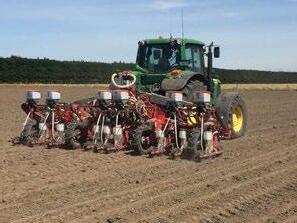



A massive thank you to all the growers who engage, question and work with the various horticulture teams on the numerous topics put to us. Please continue to engage with us and provide your thoughts and feedback

HortNZ made a joint submission with primary sector and Māori agribusiness on the government’s pricing agricultural emissions recommendations.
HortNZ supports the primary sector and Māori agribusiness joint submission. HortNZ believes a balance has been struck with the recommendations within the submission, that will enable the primary sector to take climate change action, remain productive and respond to increasing market demands for climate action.
HortNZ also made a separate submission on the government’s recommendations, reiterating support for the primary sector and Māori agribusiness joint submission. The HortNZ submission also reflected the views of growers, some of which differ from the position HortNZ has taken in the joint submission.
Growers hold a range of views on pricing agricultural emissions, including:

Lack of support for pricing agricultural emissions from some growers. These growers considered the focus should be solely on emissions management. These growers were concerned about the added pressure from pricing, on growers and farmers struggling with inflation, workforce shortages and regulatory complexity
Support from some growers for an agricultural emissions management and pricing system. These growers considered a robust system to be important to support international trade, and alignment with increasing market requirements for climate change action
A split view on whether the point of obligation for paying for fertiliser emissions should be at the Farm Level or the ETS.
HortNZ has submitted on the government’s proposed definition of food waste. HortNZ has sought the following outcomes:
A suite of national definitions for food, food loss and food waste.

Food: distinguishing between the edible and inedible food waste generated. Food loss:capturing food loss that occurs during the post-harvest through distribution stages.
Food Waste: capturing food waste that occurs during the wholesale and retail stages through to household stages.
https://environment.govt.nz/what-government-is-doing/ areas-of-work/waste/reducing-food-waste/

We are concerned that the government is conflating the outcomes sought with improved food loss minimisation and waste management. We consider it necessary to be clear about the key outcomes sought. We seek that policies are assessed for effectiveness both against individual outcomes and combined outcomes. Robust analysis is necessary to optimise co-benefits, avoid unintended consequences and avoid an inequitable distribution of the costs and benefits of food loss and waste management. The three areas we consider food loss and waste policy needs to be explicitly assessed against are impacts on:
Reducing methane and carbon emissions, and including lifecycle greenhouse gas emissions Optimising waste streams for economic benefit
Improving food security, including food safety, for New Zealand and the Pacific.
HortNZ submitted on the proposed Te Tai o Poutini District Plan. The Te Tai o Poutini Plan is a combined district Plan for the Grey, Buller and Westland District Councils. Hort NZ has sought an enabling approach to Horticulture as a potential growth industry for the West Coast.

https://ttpp.nz/wp-content/uploads/2022/07/TTPPProposed-Plan-ratepayer-mail-out.pdf

HortNZ has developed a submission on the Timaru District Plan. We seek a framework that enables horticulture within the rural environment.
HortNZ believes clarity is required to ensure appropriate horticultural production activities, such as nonsoil based covered cropping and independent post-harvest facilities are located within horticultural production areas.

HortNZ believes reverse sensitivity issues needs to be addressed to enable horticultural production activities to occur in rural zones and particularly where there is new residential development occurring near zone boundaries, or at the edge of established towns.
https://timaru.isoplan.co.nz/

Grow Home Safe is being predominately funded by ACC through a Workplace Injury Prevention Grant and run by HortNZ.
“We want the horticulture industry to be the safest and most attractive primary industry in which to work in New Zealand,” says Apata group compliance and safety manager, Kate Truffit. “This is the first time that we have had detailed information about injuries in the horticulture industry. This level of detail is vital to making the level of progress envisaged.
“The project is built around four objectives – Understand > Intervene > Support > Lead. Each objective addresses a specific problem and establishes new approaches to reduce harm.”
Kate says growers and industry are right behind the drive to reduce injuries.
“The horticulture sector is diverse and complex, spanning large corporates to small family operations. We know growers face many challenges. This has been especially evident over the past few years with Covid-19.
“Most growers already have excellent track records when it comes to safety and wellbeing in the workplace. Indeed, 92 percent of those who completed the project’s survey said they worked in a safe and healthy environment.
“However, the sector recognises that harm is increasing, and that new, evidence-based system wide approaches are required to decrease harm. By developing a cross-sector community of practice around safety and wellbeing, the project will enhance workplace safety and wellbeing in horticulture nationally.
“This will involve us working with ACC, WorkSafe and similar sectors to ours to develop ways practical ways to reduce injuries and enhance wellbeing, across every aspect of commercial fruit and vegetable growing.”
Kate Truffit, Apata group compliance and safety manager
Publicly accessible accident and injury data is only made available under agriculture, making it hard to understand horticulture-specific harm rates. The horticulture sector currently makes assumptions when it comes to statistics. As a result, a vital aspect of this project has been to develop a more accurate understanding of horticulture specific data. This report is the first step to developing this better understanding.
There are multiple variables present in near misses, incidents and accidents. At present, little is known about how the different variables combine to increase or decrease the risk of harm. By developing this understanding, interventions can be much more targeted to have the highest impact.
If you would like to be involved in the project, or more about what we are doing, please contact HortNZ data, systems and insights manager, Emily Lake: emily.lake@hortnz.co.nz or 027 582 6655.
A project to enhance safety and wellbeing in horticulture has reached its first milestone with the release of a report that delves into what happens in horticulture workplaces.
This project takes an evidence-based systemwide approach to help identify and assist in the varied safety and wellbeing issues that our Growers within the Horticulture and Viticulture sectors are facing today.
84% of respondents said they worked for organisations where safety was a priority
Horticulture workers
compared to construction and agriculture workers, even though horticulture has a similar proportion of claims requiring time off
Two thirds of respondents reported feeling levels of stress that were uncomfortable for them
What we did
• Online workshops
• Site visits across six regions
• Health and wellbeing survey
• Analysis of ACC and WorkSafe data
Lumbar sprains, cuts to hands and fingers, back or shoulder injuries, and eye injuries are the most common
out in horticulture related ACC claims in 2021
This spike may be related to
One third of respondents said they had experienced incentives to work longer or quicker than is safe in the past 12 months
$15m paid
minor claims and increase in sector size
require fewer days off
Horticulture has a positive attitude towards safety Employers are engaged in keeping people safe
The pressures that growers face are significant. From labour shortages to compliance burdens and climate change. It is easy to stay focussed on immediate and visible risks but what about those hidden ones that we often forget?
Earlier this year New Zealand observed increased volcanic activity at Mt Ruapehu and Lake Taupo which served as a useful reminder of volcanic threats. While the tremors and volcanic unrest of Ruapehu did not result in an eruption, it does provide the horticulture industry an opportunity to evaluate the readiness of the sector in the unexpected event of an eruption or natural disaster.
As residents of a geographically diverse landscape, we must acknowledge that New Zealand lies on an active subduction zone between the Australian and Pacific tectonic plates.
Despite the ongoing unrest, an eruption is considered unlikely1. It is possible that the unrest will result in minor eruptive activity confined to the lake basin. This may result in lahars connected to the Whangaehu River2
Horticulture around Mt Ruapehu
Horticultural production surrounding Mt Ruapehu is to the north (near Turangi) and south (greater Ohakune area).

1. https://www.geonet.org.nz/vabs/37Ji0FE8bol0IJ80O2drv0
2. https://www.geonet.org.nz/vabs/37Ji0FE8bol0IJ80O2drv0
Primary crops grown in these areas include brassicas (e.g., broccoli, brussels sprouts, cabbage, cauliflower) and root crops (beetroot, carrots, parsnips, potatoes).
Approximately 1500-hectares of short rotation cropland exists in the immediate area3. If this cropland is entirely in vegetables, then it equates to approximately three percent of the national vegetable growing area. While this growing area is small relative to the national production area, it is important. It fills a specific gap in seasonal supply because the harvest is later than other North Island growing areas.
The adverse impacts of a volcanic eruption to horticulture are highly dependent on a range of components such as the temperature and composition of the volcanic magma, the severity and duration of the eruption and the volcanic activity. E.g., lahars, ash, landslides etc. Wind direction and windspeed influence the direction and dispersal of erupted debris while the shape of the landscape would determine the ease of flow and movement of any lahars. Volcanic ashfall presents the biggest volcanic threat to New Zealand’s primary sector and even small, explosive eruptions can distribute volcanic ash hundreds of kilometres from the volcano (Ministry for Primary Industries, 2012). The impacts of other hazards such as lahars, pyroclastic airborne deposits and volcanic gases are generally restricted to smaller areas.
3. https://lris.scinfo.org.nz/layer/104400-lcdb-v50-land-cover-database-version-50-mainland-new-zealand/
The primary risks to horticultural crops are (MPI 2012):
• Inhibited transpiration and photosynthesis due to clogged leaf pores blocking sunlight
• Contamination of crops and fruit, as well as leaf blemishes – making crops unsuitable for sale and consumption
• Defoliation may occur as the weight of heavy ashfall can strip leaves and break weak branches, particularly if the ash is wet
• Acidic ash may burn plant tissue, causing death of plant buds and russet, delayed maturity, fruit and vegetable drop or impeded colour development in fruit
• Acidification of soil and water uptake due to acid rain and ashfall
• Disruption of pollination processes which may result in reduced fruit and vegetable set and smaller or deformed fruit and vegetables
• Access difficulties due to damaged roads etc.
Ashfall affects crops differently depending upon the type of crop, developmental stage, what time of the year eruption occurs, eruption duration and the climate4
Rainfall interacting with volcanic gas within the ash plume may produce acids that fall as acid rain. Acid rain falling on plants can lead to both issues for the plant surface but also hydration issues if absorbed through the soils. Similarly, ash deposited on the ground can alter the soil chemistry, changing the acidity, nutrient and water content which can have detrimental effects to plant health and growth.
Human health and wellbeing are also impacted by natural disasters. These events can be incredibly stressful, and recovery can take a long time, with a significant mental and financial toll. The good news is that by being proactive, getting prepared and planning, you can minimise the impacts of a volcanic eruption and reinforce your personal and business resilience.
The 2012 MPI ‘Volcanic Eruption!: Impacts and hazard mitigation for New Zealand’s primary production industries’ document outlines a number of recommendations that are intended to increase preparedness, mitigate against damage, and facilitate rapid recovery to full production. Many are relevant to horticulture. These include:
• Stocking up on general emergency supplies such as water, food, batteries, candles, and fuel for at least three days
• Ensuring farm insurance cover is adequate and covers crop insurance for volcanic impacts
• Maintaining a resilient power supply by checking power lines and poles are free from overhanging branches, purchasing a generator and ensuring key equipment can be run from tractor power take-offs
• Keep water distribution systems well-maintained and, have maximum storage in covered water supplies where possible
• Ensuring farms have adequate tank water storage and that stored water can be distributed if pumping facilities are disrupted, by locating tanks on top of topographic highs so water can be gravity-fed
• Taking steps to protect household water supply by installing a disconnect valve on roof-fed rainwater tanks and stockpiling bottled water.
• An air compressor in good working order is useful for cleaning ash from machinery
• Locating a site suitable for dumping ash after a clean-up and consider what can be used to cap the ash deposits – e.g., soil may prevent ash being remobilised by wind or water erosion
• Ensuring ladders, brooms, shovels, and bucket and blade attachments on tractors are on hand for cleaning up
• Stocking up on masks and goggles
• Prioritising farm activities by developing a list of facilities that must be kept operative following an eruption versus secondary operations.
Ruapehu means ‘pit of noise’ or ‘exploding pit’
Largest active volcano in New Zealand
Lake temperatures fluctuate but prolonged spikes in temperatures can signal volcanic activity
Last eruption: 2007
Result of eruption: ash, rocks and water spread across the summit, producing lahars (mudflow of volcanic material) in two valleys.

Livia was appointed to the role in October. The gamechanging multi-year partnership programme between government and industry addresses the challenge of meeting consumer demands for quality food while also being gentle on the environment.
“Food production is one of the biggest environmental issues we face globally,” Livia says. “The use of chemicals, pest management and soil health need a different approach. This is why I’m so thrilled to be joining this innovative partnership with 15 of New Zealand’s leading commercial product groups and the government all focused to transform how fruit, vegetable and arable crops are grown with a lighter environmental touch.”
The governance group of the $25.5m, Sustainable Food and Fibre Futures Fund (SFFF) undertook an extensive search for a high-calibre director, which resulted in Livia’s appointment.

“The programme is pleased to have been able to appoint a person of Livia’s experience and passion to lead it into its next stage, where the projects underway will start to deliver sustainable pest and disease management programmes for the commercial horticulture and arable sector,” says A Lighter Touch independent chair, Dr David Tanner. Livia says the environment needs a lot of support.
“We all need to make changes if we are to continue to have a planet we want to live on,” she says. “But I also understand that it makes no sense to come up with programmes which are not economically viable for growers.
“
A Lighter Touch is not about completely stopping the use of agrichemicals. It is about a wholistic approach to pest and disease management.
“It is an exciting programme which offers huge opportunities for growers in New Zealand to show the world how food can be produced sustainably and to also meet the global pressures which are coming, including around how consumers want their food produced.
“If we are not well prepared for those changes it could be a disaster as we are a food producing nation.”
Collaboration and networking among growers from different industry sectors are among the programme’s strengths.
“When you bring unlikely friends to the table, magic happens,” Livia says. “Bring a diverse group of growers together and it’s likely many are facing the same issues and problems. It’s also likely some of these have already been resolved somewhere else, but while you remain in your own silos you will never know.”
There will be early adopters of the A Lighter Touch programme. Telling their stories, warts and all, will be important.
Livia Esterhazy, whose career includes executive roles in banking, marketing, advertising and a not-for-profit environmental organisation, is the new programme director for A Lighter Touch.
We won’t get every grower adopting A Lighter Touch within seven years, but we will be well on the way
“Those stories must be honest, transparent and inspiring but not glossy comms pieces because growers are very astute and will see through that,” Livia says. “It is important to share the wins and also the failures because there is much to be learnt and money saved from understanding failures.”
The programme has a seven-year time frame and Livia is confident that it will meet many of its objectives in that time.
“We won’t get every grower adopting A Lighter Touch within seven years, but we will be well on the way. Perhaps A Lighter Touch ‘Version Two’ will be required, but the ultimate aim is to make the programme redundant because the entire industry has adapted to have a lighter touch on the environment.”
Livia recognises the considerable pressures growers are already under, especially from climate change regulations. “Everything now needs to be done at a faster pace, but the knowledge around climate change is not new. If these regulations were implemented 20 years ago, they could have been introduced at a much slower pace. All of them cost money. It’s not an easy time for growers. Through A Lighter Touch we aim to create change a little more slowly.”
Livia, who now lives at Mapua in the Nelson Tasman District, is the daughter of a French mother and HungarianAustralian father.
“My father was a hotelier who opened hotels around the world, so we travelled rather like a military family,” she says. “I was born in India and then moved to Singapore, Korea, Pakistan, Melbourne and then Sydney. By the time I was 11 Mum said ‘enough’ so we stayed in Sydney.”
Young Livia’s career ambition was to become a commercial pilot, but a flight in the cockpit of a commercial aircraft to Bali changed her mind.
“I was totally bored.”
Instead, she studied for a bachelor’s degree in marketing and finance with Honours at the University of New South Wales.
What followed included diverse roles such as: Senior executive marketing communications for the Commonwealth Bank; managing director of Ogilvy & Mather in Wellington; brand manager for Kiwibank; general manager Saatchi & Saatchi; non-executive board member of The Treasury New Zealand; chair of the board of Asia Pacific Growth Strategy and most recently, chief executive of the World Wildlife Fund, New Zealand.
“Among the aspects of my new role that I know I’m really going to love is meeting growers face-to-face, learning about what they grow and how they grow it, and being part of a programme which will make a real difference to them and at the same time, the environment,” Livia says.
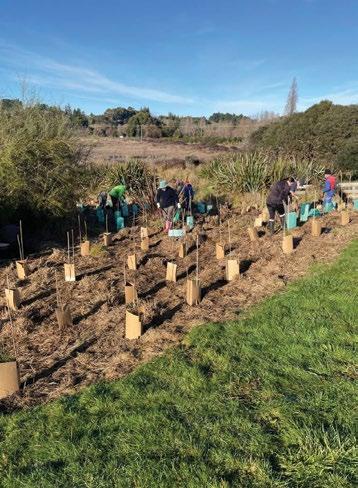
To find out more about A Lighter Touch, visit: https://a-lighter-touch.co.nz

A Lighter Touch is a $25.5 million, seven-year, programme jointly funded by government and industry. The programme will address the challenge of meeting consumer demands for safe food that is produced under sustainable pest management programmes while also being gentle on the environment. Government funding is via the Ministry for Primary Industries Sustainable Food and Fibre Futures programme.
A Lighter Touch will focus on understanding and better managing aspects of agroecosystems that lead to increased levels of pests and diseases, and how to integrate more sustainable crop protection practices. Understanding the agroecosystem and reducing the opportunity for pests to thrive will reduce the need for crop protection interventions.
There will be increased use of biopesticides and biological control agents, with these tools becoming embedded into crop protection programmes. Agrichemical residues in exported crops and products, overall agrichemical use and resistance risk will all be reduced and be a marketing advantage for New Zealand products.


The plant-based food sector, incorporating horticulture, arable cropping and wine production, generates over $8 billion annually. New Zealand horticulture is valued

at over $6 billion, with $3.4 billion in exports, produced by over 5500 commercial fruit and vegetable growers. The arable industry contributes $1.4 billion to the economy from domestically consumed grain and food crops, and seed exports. The wine industry produces $1.9 billion of wine for domestic and export sale, with all but $54 million exported.
More at https://a-lighter-touch.co.nz
According to the great Irish playwright
George Bernard Shaw, “the rain in Spain stays mainly in the plain.” But in 2022, it was everywhere in Gisborne, uniting growers in one soggy situation.
Most growers from the coast to the flats to inland hill country, started the year fresh off November 2021's one-in-50-year rain event that, as well as leading to a State of Emergency, caused land damage and setbacks to planting programmes.
That was particularly bad news for maize, sweetcorn, and squash growers… and there was more to come.
As the New Year rolled on, so did the rain.
In late March there was another State of Emergency as the region was pummelled by a 250–300ml downpour –around three months’ worth – in just 24 hours, followed by another week of steady rain.
That left growers just two weeks to rescue what they could before the arrival of ex-tropical Cyclone Fili, which again ripped through hill country, devastated roading and dealt another blow to beleaguered growers.
At the time, Judco nursery harvest manager, Matt Sowerby, told NZGrower he was in salvage mode, trying to get as
much as possible off the company's collapsed tomato vines.
With around 70 hectares of Judco’s 183 hectares of tomatoes still to harvest, things were looking grim, said Matt, who was concerned about the downstream effect on local processing companies.
That was a concern confirmed by Cedenco Foods managing director, Tim Chrisp, who said that after a challenging season, the company was down more than 15 percent across its main product groups of tomatoes, sweetcorn and squash.
Gisborne produce grower, Calvin Gedye, says about 40 percent of his own crop was affected first in the November 2021 rains, then during the downpours of March 2022 – and the winter that followed was not much better.

“To be honest, it has been absolutely brutal,” says Calvin, who grows a variety of products across the region. “Of course, the weather has been the number one impact, but we still have issues associated with supply chains, insidious cost increases and the general conditions around a Covid-19 environment.”
Working with around 45-ha, Calvin’s growing operation is smaller, which makes him nimble enough to dodge some of the issues faced by bigger operators “who have been doing it tough.”
“But we've still had ongoing issues,” he says. “If you can’t get onto the paddocks to plant that sets you back and means sometimes you can't meet your customers’ needs.
“That’s not how we like to run things and obviously, it's not good for the bottom line. We're all pretty worn down by it all.”
In late March there was another State of Emergency as the region was pummelled by a 250–300ml downpour – around three months’ worth – in just 24 hours
Perhaps ironically, Calvin believes the extension of the warm season caused by climate change could, for once, be the saving grace for growers.
“Wet conditions have meant things like maize have been planted late but, assuming there's no more big events, we're optimistic there’s going to be some successful crops coming in,” Calvin says.
As Calvin spoke, in the second week of November, the region was enduring another big downpour, taking the number of major events to five in just 12 months.
And again, it was the coastal areas north of Gisborne that were worst affected.
In its seasonal outlook for November 2022 to January 2023, NIWA (the National Institute of Water & Atmospheric Research) says the Gisborne/Tairāwhiti region can likely expect above average temperatures and humidity; nearnormal or above-normal rainfall; and near-normal soil moisture levels.
That's just a climate geek’s way of saying what Gisborne growers already know… the region really is warmer and wetter than it was before.
It's a phenomenon already acted on by uber-grower LeaderBrand, which, after the March rain event, lost produce from buttercup squash to spinach and broccoli.
At the time construction was underway on the company’s three-hectare greenhouse at Makaraka, on the Poverty Bay Flats just out of Gisborne, with plans to have an even bigger eight-hectare greenhouse built by early next year.

As the first trial crops went into the now-operational first greenhouse, in July, LeaderBrand’s general manager of farming, Gordon McPhail, said going under cover represented a big change to current practices.
“We think this style of farming will be the way of the future,” he said.
With the memory of their 2021–2022 losses fresh in his memory, Gordon said the greenhouses would help mitigate most weather impacts and supply variations, while allowing LeaderBrand to explore more technology and farm more sustainably.
“We had a terrible couple of months of storms and loads of rain, which impacted our planting and harvesting programmes,” he said. “The goal is to have a more consistent crop supply that will ultimately ensure we can keep feeding New Zealand with healthy, fresh vegetables at a more consistent price.”
Generally, we're looking at 2022 as being a oneoff, so we're now in reset mode. Let’s just hope that, for 2023, the weather gods deliver us a better year
It was a challenging year too for the large grower Coxco. Managing director Omi Badsar says that on top of logistical issues like having a two-week shut-down at the packhouse due to Covid-19, the rain caused an overall loss of some 70-ha – about 20 percent – of their squash harvest.
Gisborne orchardists weren't as badly affected by the weather as their vegetable-growing counterparts, but they certainly didn't get off scot-free.
As well as being a major grower, particularly of apples, kiwifruit and feijoas, Kaiaponi Farms provides other growers with harvesting and packhouse facilities, so general manager Scott Wilson has his finger on many pulses.
After five great years for orchardists, he describes 2022 as being “a bit of a reality check.”
“Generally, the inclement weather combined with issues around staff availability and ongoing issues with Covid impacts made it a really tough year,” Scott says.
While kiwifruit harvested out of Gisborne initially looked good, hindsight revealed there had been some quality issues, which Scott says Zespri addressed before export fruit left the docks.
“But the apple industry is not quite as well co-ordinated, so a lot got away before quality issues were sorted out,”
he says. “Combine that with shipping complications and the door was open for more complaints and claims from importers than local apple growers have seen before.”
Those challenges were reflected in the November financial update from exporter T&G Global, which said the deterioration in the quality of rain-hit Envy apples, combined with its late arrival into markets as a result of supply chain disruptions, caused quality issues and an inconsistent eating experience for consumers.
As a result, T&G said it would likely report a loss of between $1 million and $5 million for the financial year to 31 December2022, in contrast to 2021's net profit of $13.6 million.
“What we're seeing is that while growers managed to get their fruit off, the lower quality and being pinched on labour means returns will most certainly be down,” says Scott. “The apple industry here is growing, but because it's been such a challenging year that was not reflected in the volumes at pack-out.”
Despite multiple challenges, Scott is optimistic about 2023. “We can certainly see the market recovering as issues related to the pandemic are improving all the time, and having regular distribution in the markets will be a useful move back towards normal.
“Generally, we're looking at 2022 as being a one-off, so we're now in reset mode. Let’s just hope that, for 2023, the weather gods deliver us a better year.”
There was better news among citrus growers in Gisborne. While some blocks had come out to be replaced with apples, kiwifruit or grapes – particularly Sauvignon blanc – citrus still dominates that group of products nationwide, and Citrus New Zealand chair Wayne Hall said it had been a pretty good year.
“Wet weather created issues with ground conditions and harvest right through autumn and winter, but we've seen our best year ever for navel oranges, both in taste and returns.”
Wayne said the sweetness of the fruit that got to market was largely due to Citrus NZ's BrimA maturity testing programme which, after six years, was really showing its worth.
“Customers were getting a good eating experience and disjointed import programmes gave more opportunities for local growers and marketers to get their product on the shelf,” Wayne says.
Mandarins, too, were doing well – particularly the Satsuma
and Afourer varieties – but faced greater competition from Australian imports.
While there were only small numbers of oranges and mandarins destined for export (and even fewer limes), that work continued with Meyer and Yen Ben lemons.
Citrus NZ executive member for export, import, postharvest and compliance portfolios, Ian Albers, said the volume of export lemons was down by around 23 metric tonnes (around ten percent) on 2021, largely because of the respective issues with China and Russia. However, that was somewhat offset by an increase of volumes to Japan and the United States.
And while growers had done well in producing volume and quality, many Meyer lemons in particular were on the large side, which don't sell so well.
“Overall, citrus growers had a pretty good season, especially considering ongoing challenges like sourcing labour,” says Wayne. “We're gradually seeing a few more backpackers around town and that's already helping out to some extent; it’s going to be tough for a while.
“It's really about growers planning well to have the workers they need, when they need them, so they can push forward and continue to achieve great results.”
As growers tussle with challenges on the land, Eastland Port is urging growers to support its Twin Berth project, which would enable it to provide a coastal container service.
Currently at consent stage, the project would mean big changes for the wharf, harbour and channel but the port says that will pay off for growers, as well as foresters and large ship operators.
Grower Mark De Costa, for example, produces maize, sweetcorn and squash and plans to plant Rockit apples.
As it stands, Mark exports squash from Eastland Port through charter vessels but hopes the Twin Berth project could enable him to export produce via a coastal container service, with apples no longer having to be trucked to Napier Port.
“It has huge potential,” he says. “We’ll be able to export everything from here… avos, kiwifruit, you name it.”
Crisphead lettuce for late autumn up to mid winter harvest (location dependent). Well wrapped with dark green leaves. Producing flat/round head with nice internal colour. Kaniere cuts cleanly and has a small-medium butt. Bl 1-28, 30-32
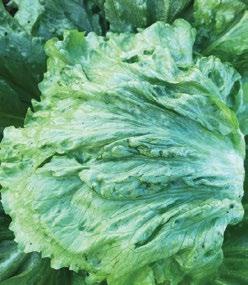
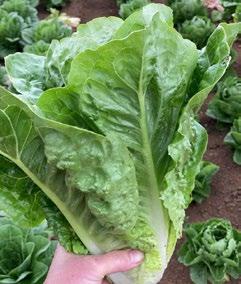
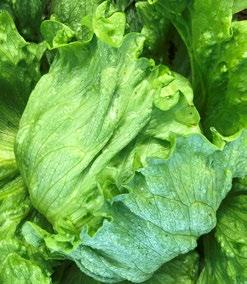
Tall
Bl 1-27, 30-32
Medium
Bl 1-24,28,32
Over the past 12 months, growers across the Bay of Plenty have faced untimely bouts of bad weather at key times for their crops, adding another layer of difficulty as increasing costs put pressure on our primary producers. With the summer crop season set to begin any day now, growers in the area are hoping the weather will play ball.
Craig McNaughton’s family have been growing boysenberries at Papamoa, Bay of Plenty for 35 years. His parents Barry and Lyn McNaughton started growing boysenberries on the then nine-hectare site in 1986, before scaling back to one-hectare and handing over the reins to Craig and his partner Jo Riddington who now run Iona Boysenberry Orchard.
With only a three-to-four-week harvest in 2021, it wasn’t a good season for the business.
“Like most berry growers, we got hammered by bad weather prior to Christmas last year which caused a lot of
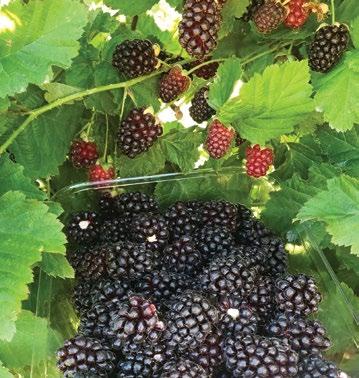
damage to our crop,” Craig says. “There are challenges with finding staff and the costs to produce a good crop have increased a lot, which reduces motivation.”
Thankfully, the upcoming season which usually begins in the second week of December, is looking promising –although Craig knows all too well how quickly this can change.
“At the moment it’s looking pretty good, but who knows what weather will be thrown at us this season,” he says. “December weather has changed considerably in the last few years.”
Iona Boysenberry Orchard sells ready-picked fresh berries and frozen berry packs, and opens up the property for pick-your-own.

While the berry operation is a firm favourite of locals and holidaymakers alike, with some customers travelling down from Auckland (and further afield) each year, increased costs are putting pressure on the orchard’s future.
“It’s not very positive. We have higher costs all around which we are reluctant to pass on to our customers, and we’re not sure how long we’ll continue,” Craig says.
Sioeli Tu’itufu and his partner Rosie Miller have been managing Liberty Growers since January 2020. The family business located in Katikati, Western Bay of Plenty, grows six different herbs, a range of salad and leafy greens, chillies, edible flowers, microgreens, avocados, limes, lemons and a few other fruit and vegetable crops.
“Our year has been a bit like a rollercoaster, to be honest,” says Sioeli. “Plenty of ups and downs. But somehow, we’re still here and operating.
“Most crops did well this year, especially lettuce, microgreens and rocket. Our mint, watercress and coriander struggled a little. This was most likely caused by some infrastructure damage we took from a storm earlier on in the year.”
Sioeli says the personnel structure of the family business has been one of the most significant challenges that Liberty Growers has faced over the past 10 years.
“Operating a small family business can be super tough, especially for those family members involved,” he says. “Conversely, it’s the family component that makes a family business so rewarding and worth the hard work, unwavering commitment, and sacrifice.”
The challenges of 2022 have harboured plenty of learning opportunities, he says.
“We feel like it’s going to be another challenging yet rewarding year. Hopefully, we can make some great progress in 2023. We are quietly optimistic about the future of our farm. What’s happened in the last few years has shown us that instability can come about very quickly and that we need to be stronger in our tolerance for adversity.”
Although the cost of production is increasing, Sioeli believes the industry will continue to adapt and continue to grow quality fruit and vegetables.
“As far as the industry is concerned, people still need to eat and have access to fresh, quality, local produce,” Sioeli says. “The cost of production is significantly trending upwards, but I believe some of us in this industry will adapt and create more cost-effective and meaningful ways of growing the best possible quality produce.”
Meanwhile, it’s been a busy year for truffle growers, Colin and Maureen Binns. This year saw an increased flurry of media attention on Te Puke Truffles, as the couple are very open in what has been a very secretive industry.

Maureen says that many people have contacted them this year, after Te Puke Truffles featured in A New Zealand Food Story with chef Ben Bayly, the NZ Grower magazine and more recently on Country Calendar.
“A lot of them want to ask us about what they need to do to grow their own trees to produce truffles,” Maureen says. “We do everything we can to help people decide if this is what they want to do and if they are in the right sort of location to make it work for them.”
Although the cost of production is increasing, Sioeli believes the industry will continue to adapt and continue to grow quality fruit and vegetables
This year saw an increased flurry of media attention on Te Puke Truffles, as the couple are very open in what has been a very secretive industry
Maureen says truffle dogs Jed and Sam are stars and they love all the truffle visitors that the couple host.

“At this time of year our visitors have various truffle treats that I prepare and Colin tells them about truffles and our truffle story,” she says. “But the favourite part of each visit is for them to watch both Sam and Jed do truffle scent work.
“We were disappointed at our harvest being lower than we had expected, but in saying that we were able to deliver to our customers and for 30 or more truffle hunts that we hosted, we were always able to demonstrate Jed locating ripe truffles. I call that a success.”
Each year they begin hosting visitors from late May until the season ends by early August. This year only three truffle hunts were free from wet weather.
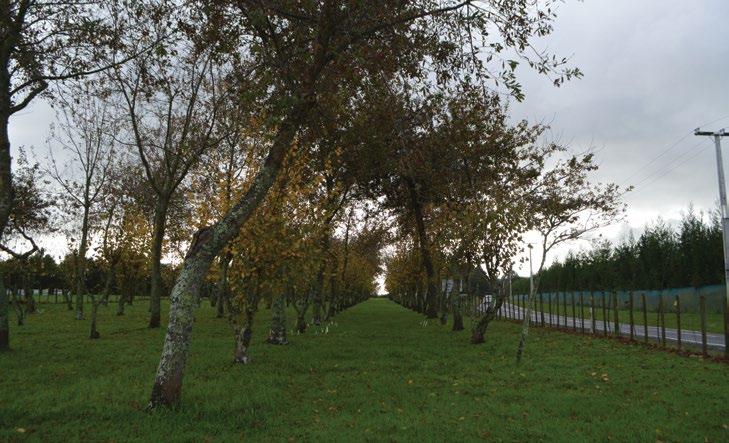
“The rainfall we had this June and again in July was the highest amount ever recorded by us since we moved here at the beginning of 2007. The poor truffles had insufficient water when they were growing and then way too much when they were ripening.”
Thankfully the Binns do not need to do any drainage work, as the soil drains really well and they have been busy aerating the soil and fertilising the truffière.
“We are looking forward to another good season in 2023 as we know there are more people now who know about truffles and want to try them,” Maureen says. “And of course, the people who already know
about truffles and love them, want more!”
Maureen says that while interest in New Zealand-grown truffles is increasing, she and Colin will have to accept they may only have another season or two before the work becomes too much.
“But the truffle dogs will be coming with us,” she laughs.

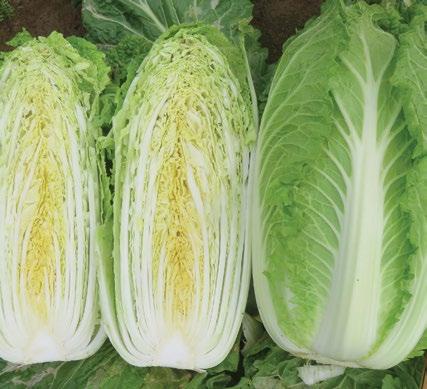






















NZGAP has been providing simplified, costeffective and integrated assurance that is trusted and valued for almost 25 years. Originally known as the ‘approved supplier programme’, NZGAP was established in 1998. Over this time, the scheme has continued to evolve alongside changing grower needs, stakeholder expectations, market requirements, regulations, science, technology and best practice.
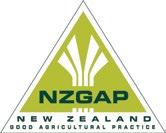

This year NZGAP has been developing and piloting programmes which are aimed at small operations. In these challenging times, the objective is to minimise the compliance burden and cost while providing the same assurance outcome and market access for these operators. The new programmes will be launched in the new year and include:
• Social Practice – no workers (e.g., family business with no additional employees or contractors)
• Contractor Standard – no workers (e.g., owner operator with no employees or sub-contractors)
• Grower–Contractor combination (grower who also provides contracting certification)
• Multi-business multi-site (e.g., grower owned sites which are managed by a central packhouse or processor).
There has also been a significant focus on engaging with stakeholders on emerging environmental regulations. The aim is to establish a pathway for recognition of the Environment Management System (EMS) add-on, which is covered in more detail in my other article (see page 27 for more information on the EMS and Freshwater Farm Plans).
The optimal solution for growers would be that the EMS is recognised as meeting Freshwater Farm Plan requirements for content, audit and certification. This would mean that growers could continue to demonstrate that they meet both market and regulatory expectations for food safety, environment, and social practice via one integrated system.
Looking forward to 2023, the key priority areas for NZGAP will be:
• Development of NZGAP version 7

• Development and recognition of EMS for Freshwater Farm Plans (if pathway is enabled in the regulations)
• Global Food Safety Initiative (GFSI) Recognition
• Continual development and improvement of processes, systems and integration to facilitate better assurance outcomes and minimise compliance burden for growers
We will also be celebrating our 25 years of enabling growers to provide assurance that their food is safe and sustainable. Keep an eye out for some stories on where we have come from and where we are likely to be heading.
Check the website or contact us for more information: W: www.nzgap.co.nz E: info@nzgap.co.nz Ph: 04 470 5867
New Zealand Good Agricultural Practice (NZGAP) is continuing to roll out the Environment Management System (EMS) as a pathway for growers to demonstrate that they meet expectations for Farm Environment Plans (FEPs) and proposed Freshwater Farm Plans (FWFPs).
There is a lot happening in this regulatory space, however growers can have confidence that NZGAP is continually working with Horticulture New Zealand (HortNZ) and regulators to seek a sensible, practical and workable pathway for delivery of FEPs and FWFPs. This pathway will enable growers to meet agreed expectations via the existing GAP system, which is trusted and valued by growers and stakeholders alike.
NZGAP certification is a cost-effective way to meet market and regulatory requirements for food safety, environmental and social practice via one integrated system that is developed with growers, for growers. Recognition of NZGAP under the Food Act 2014 is an example of this type of integrated solution which has saved growers from lots of complexity and confusion and has saved thousands of dollars in compliance costs.
A new ‘catchment context’ section has been added to the EMS to meet FWFP requirements, and additional tweaks will be made through the pilots to give regulators confidence that the EMS can meet their expectations. In addition to FWFPs, NZGAP is focused on attaining recognition for the key assurance steps of audit and certification that are crucial for delivery of an integrated system for growers.
There is a lot of detail and clarity still to come with FWFPs, however, it is already clear in legislation that growers with five or more hectares of horticulture, or more than 20 hectares of mixed land uses, will require an audited and certified FWFP when the regulations are ‘switched on’ in their region.
Looking to the regions, the EMS has recently been re-recognised as an Approved FEP ISO (International Organisation for Standardisation) Programme in Canterbury under Plan Change 7 of the Land and Water Regional Plan. Re-registration is required every four years so it will have to be renewed again in August 2026. Recognition means that growers who have FEP audit requirements in their consent conditions can comply with Environment Canterbury expectations via the EMS add-on. This can be audited at the same time as their usual NZGAP or GLOBALG.A.P. audit.
FWFP regulations are not expected to be finalised until early 2023, however, in the meantime FWFPs are being piloted in the three priority regions of Gisborne, Waikato and Southland. NZGAP, HortNZ and key stakeholders are engaging with these councils plus growers who have been approached to pilot the new FWFP approach using the EMS as the basis for their FWFP.
AsureQuality auditors are currently going through the approval process with Environment Canterbury. This will enable growers to obtain an audit in the new year when FEP audits are due for those with a current land use consent to farm or water take and use consent with FEP audit conditions.
NZGAP certification is a costeffective way to meet market and regulatory requirements for food safety, environment and social practice
Gisborne District Council also formally recognises the EMS add-on as an acceptable pathway for growers to meet their Farm Environment Plan (FEP) requirements under the Tairāwhiti Resource Management Plan (TRMP). Vegetable and cropping growers (more than one hectare) in Gisborne are now required to have an approved FEP in place. Vegetable and cropping growers also must have a five-metre cultivation setback in place, or a one metre setback with additional appropriate measures (e.g., decanting earth bund). These expectations can now be met, audited and certified via the EMS as it includes a comprehensive soil management area that helps growers to address issues with soil erosion and sediment control.
At the time of writing, more than 8,200 hectares of fruit, vegetable and cropping growing land in Gisborne has an FEP in place via the EMS. EMS audits will be undertaken over the coming months to to verify that FEPs meet the required standards. This will give confidence to council and community that growers are good custodians of the land, by demonstrating that they have appropriate systems in place, have identified environmental risks and are taking action, have appropriate measures in place, and are making progress on key issues.
In Hawke’s Bay, the proposed Plan Change 9 for Tūtaekurī, Ahuriri, Ngaruroro and Karamū (TANK) Catchments has delivered a great outcome for growers by enabling an effective pathway for delivery and audit of FWFPs via industry programmes and/or catchment collectives. This excellent policy outcome paves the way for recognition of the EMS in Hawke’s Bay and provides a blueprint for regulators on how to enable recognition of credible industry assurance programmes like the NZGAP EMS add-on.
Growers in the Horowhenua, Waimea, Pukekohe and Northland are also proactively implementing the EMS in an effort to improve farm practices and reduce the environmental impact of horticulture especially in those sensitive or overallocated catchments.
It has been a long road to this point with significant resources put towards development, recognition and implementation of the EMS. These efforts are starting to bear fruit with the improved policy outcomes that we are now seeing across the regions and with central government for FWFPs.
The key message for growers is to get on the journey and/or continue to develop and implement their FEP as these forms a strong basis for FWFPs when they become required. All EMS documentation is freely available on the NZGAP website so growers can get on the journey, one step at a time, without facing any initial compliance costs for registration, audit and certification unless they proactively want to get ahead of the regulations.
For more information on the EMS add-on, visit the NZGAP website: www.nzgap.co.nz/EMS

The ‘P’ in the acronym IPM stands for ‘pest’ but at Moutere Strawberries in the Tasman District it could equally stand for ‘pig’ as kune kune pigs are a vital part of the farm’s pest and disease management programme.
Sally Wisheart was studying for a Bachelor of Commerce and Administration at Victoria University in Wellington when she and Barry Clelland, a telecommunications technician at the time, bought their Moutere property.
She fell in love with the 1904 house built by German pioneers who settled the land in the late 1880s and grew hops there. She told Barry; “this will be fun, we can become strawberry growers”.
A hop drying shed, built in 1947, still stands on the property, serving as a continual reminder to Barry of his ambition to one day become a brewer of craft beers but for now, he and Sally are committed to growing the tastiest strawberries around.
The duo say that anyone that works at their Tasman property has to like animals, pigs especially, because when they are picking, their swine friends Peony, Fergus and Bryan, are busy eating up any poor-quality fruit or leaves that are dropped on the ground.
“They do an amazing job and by 4pm each day all the fruit and leaf matter is gone,” Sally says.
Barry says the pigs play an important role for the farm.
“The whole thing about Integrated Pest Management (IPM) is that it’s a combination of using good bugs to eat bad bugs and appropriate soft chemicals when outbreaks of pests occur. It’s also about keeping the whole farm clean so diseases such as botrytis don’t develop and spread –and that’s where the pigs come in.”
IPM has a focus on using biological options for pest control, minimising the use of chemical pesticides and ensuring those that are used do not affect the predators.
When not ‘working’ in the farm, the pigs graze in a nearby paddock. A couple of cows and calves, a few sheep plus some chickens and the family cats are in residence; but two other pets, collies Jess and Mac, also form part of Moutere Strawberries’ management team.
Strawberry harvest is Fergus the kune kune pig’s favourite time of year. It’s when he helps clean up the farm at Moutere Strawberries, while Sally Wisheart picks fruit
They are the “entertainment officers” for the public, children especially, who come to buy strawberries, ice cream, coffee or Sally’s award-winning jams and preserves. Each dog has their favourite toy which they drop for people to throw for them.
Since they bought the small farm six years ago, Barry and Sally have expanded the growing area to one hectare of strawberries in bags filled with coconut coir on two-tier ‘tabletop’ structures.
“We did start by growing strawberries in tunnel houses, but we had too many problems with diseases like botrytis,” says Barry who is on the executive of Strawberry Growers NZ. “I firmly think strawberries grown outside in natural light taste better – well that’s what our customers tell us anyway.”
The Moutere climate is ideally suited to outdoor growing with hot summers and frosty winters.
“Traditionally it rains here up to the third week in December and then it’s dry until the end of April, so we don’t have to worry about not being under cover,” Barry says.
The property has two shallow bores but most of its water is from a reticulated council supply.
“The water cycles are very short – between four and eight minutes, so it’s not running all the time,” says Sally.
In part of the farm there’s a test block of 3000 plants of a new strawberry variety, while around 18,000 Monterey plants account for the rest of the crop.
“Monterey is probably the best cropping tabletop, dayneutral strawberry,” says Barry. “They are big, bulky plants with large flowers.”
Day-neutral strawberry plants have a longer harvest season and higher overall yields than June-bearing strawberries.
Sally and Barry’s plants are fed by a ‘secret’ fertigation formula which ensures they receive the right mix of nutrients. “People think growing strawberries is easy, but it’s not,” says Sally.

Barry says he was once told by “an expert in everything horticultural” that if he could master growing strawberries, he could grow anything.
it
The strawberry season begins with individually planting every one of the thousands of plants supplied by strawberry ‘runner’ growers in the Bay of Plenty.
“It takes a bit to get them going from bare rooted, stressed plants. You can buy strawberries in a pot, but they are twice the price. However, next year, I might try some to see what benefits they might bring.”
Once planted, the strawberries require close and frequent checks for pests and diseases, and that the fertigation system is working as it should.
Thrips, which feed on strawberry flowers and also leaves and fruit, are not a problem on the Moutere farm, but each November a ‘nasty bug’ called Carpophilus turns up.
“It’s a black beetle which bores holes in ripe fruit,” Barry says. “They come en masse and strip the fruit.
“I’ve set up four pheromone traps around the farm, which gets the males every time. There’s an insecticide block inside and there will be thousands of them dead in there.”
Sally says the beetles get into the picking trays, making grading and packing the fruit more difficult.
“When we first found this beetle, no one else in the industry knew what it was. They said it was a South Island thing.”
Fortunately, the beetle invasion doesn’t last all season, but of course there are other threats.
“Birds, mainly blackbirds and thrush, peck the fruit early
In part of the farm there’s a test block of 3000 plants of a new strawberry variety, while around 18,000 Monterey plants
in the season, around the time the birds are raising their young,” Barry says. “After about a month they stop, so it’s not worth us covering the fruit with all the associated issues that raises, including for pollination. I don’t really like sharing fruit with the birds, but I know it’s not forever, so I tolerate it.”
He's also working with a friend and pest advisor who breeds insects which prey on two-spotted mite. Barry helps by growing beans to attract the mites to provide food early in the season. This, in turn, encourages large enough numbers of ladybirds to breed and become an effective insect control out in the strawberry farm.

During Covid-19 lockdowns the couple installed a fresh fruit ice cream parlour and have now kitted out a coffee cart, placing tables, chairs and umbrellas around for the public to relax and be entertained by Jess and Mac.
“We are hoping for a great summer this year as the last two have been extremely tough for a raft of reasons,” says Barry. “In the last week of January this year [2022] sales stopped as if everyone had left the South Island. No one turned up.”
“We just didn’t get the travelling public calling in, especially families and young people,” Sally says.
With a determination to make the most of the fruit they and other locals grow, Sally began making jams and this year. Her raspberry and blackcurrant jams and grapefruit and orange marmalade won gold medals at the NZ Artisan awards. Her Three Berry and Chilli Jam won bronze.
A drop in sales led Sally to freeze strawberries, which picked up a silver award. She sells this latest product
Demand for her berries soared when six imported frozen berry products were recalled in October due to a potential link to cases of Hepatitis A.
“I didn’t have enough frozen strawberries in stock to meet demand, but now lots of people know about our product,” Sally says. “I advise anyone buying frozen berries to read the fine print to see where they were grown.”
 through Mapua Fruit and Vege, Fresh Choice Richmond and Takaka, New World Motueka and Nelson, Benge and Co in Nelson City, and Pak’nSave Richmond.
Tunnel houses in which strawberries once grew are now full of vegetables and herbs
through Mapua Fruit and Vege, Fresh Choice Richmond and Takaka, New World Motueka and Nelson, Benge and Co in Nelson City, and Pak’nSave Richmond.
Tunnel houses in which strawberries once grew are now full of vegetables and herbs
Co-operation and collaboration between product groups and with Horticulture New Zealand has never been more important believes Mick Ahern, winner of the Horticulture New Zealand Industry Service Award for 2022.
ELAINE FISHER reports.
“Today’s horticulture industry leaders have one hell of a job. That is why they need the industry’s support to deal with the volume and complexity of challenge and change that the industry faces,” says Mick, who has retired after 45 years of diverse and active involvement in horticulture.
“Multi-product group support and the personal knowledge and camaraderie that brings, centred around HortNZ makes a lot of sense. HortNZ can’t do all that is required on its own but is the recognised go-to organisation for government agencies.
“It needs the product group people to put their shoulders in alongside the chief executive and specialist staff. This also adds to the credibility and quality of communications with growers.”
HortNZ president, Barry O’Neil, who presented Mick with the service award in September, says Mick has contributed to the development of the horticulture industry for more than four decades.

“Mick is known for his common sense and ability –after everyone else has exhausted themselves with talking – to sum up the situation and provide wise counsel, while pointing to the best, if not only, way forward.”

Mick has stepped down as executive manager for Strawberries NZ and as managing director of Primary Services Ltd – the management consulting and contracting horticultural company with an emphasis on export he founded.
The impacts of the Covid-19 pandemic, says Mick, including government-imposed restrictions on smaller fruit and vegetable retailers, wholesalers and food service outlets, plus labour issues, are still being felt by growers.
also learnt a lot the hard way about produce supply chains.
The list of risks is daunting and includes, labour, weather, climate change, logistics, regulations, shipping, currency, product quality, market access, risks in-market and risk around securing payment.
Given all the risks involved, no one should expect fresh fruit and vegetables to become significantly cheaper.



“People think nothing of spending $20 on a bottle of wine but complain when cauliflowers cost $10 now and again. The public needs to learn how to buy better in-store, to make what they buy last longer and above all appreciate that good, safe healthy food costs inflation impacted money to produce. In other words – cough up for produce and maybe drink less booze.”
Looking ahead, Mick predicts shipping issues for export crops should improve, “although the dominant multinational providers are trying to extend their exceptional windfall gains of last year.” However, globally the freight market is moving back again.
“Airfreight will take longer for exporters, until our tourist trade builds up again,” Mick says. “Labour will also resolve itself frankly because it has to and as the realities of our declining balance of trade hits home.
“As a rule of thumb, industry people say growers can survive two tough years in a row and maybe three in ten years,” Mick says. “But after that, many will look to reduce their risk either by planting less or exiting the industry. This particularly applies to annual crops, especially vegetables. Growers are also leaving the industry as regulatory impost, age, risk-reward ratio and work ethics change.”
The pandemic restrictions highlighted a deficit in practical knowledge and awareness, both by government and the public, of the level of risk growers take each day to grow fresh produce, Mick says. Government agencies
“The world’s current geopolitical tensions may offer export opportunities. We have always been opportunistic. “The trick is to keep at it, sustain a sense of humour and camaraderie, look after industry bodies and their staff and fund them well to do the essential work needed. Good team morale is essential in hort.”

Mick grew up at Otaki, the son of a market gardener growing mainly outdoor tomatoes. In 1975 he graduated from Victoria University with a bachelor’s degree in Commerce and Administration with honours. Mick’s honours case study into the background and development of the then fledgling kiwifruit industry led to his career in horticulture.

The pandemic restrictions highlighted a deficit in practical knowledge and awareness, both by government and the public, of the level of risk growers take each day to grow fresh produce
“I was taken with the idea of exporting New Zealand food products as a career,” Mick says. “It seemed meaningful and so did the product. I was also broke and overseas travel paid by an employer appealed a lot.
“Exporting was the ‘hot’ issue of those times as New Zealand wrestled to diversify products and markets after the United Kingdom had joined the European Union and put the dairy industry, in particular, on the back foot. There were generous tax incentives which also made exporting exciting. You felt you were doing something important for New Zealand.”
“In the end, this comprised great relationships with the Bostock group, industry bodies Onions New Zealand (ONZ) and Strawberry Growers NZ (SGNZ). I was also on the board of Horticulture Export Authority (HEA) for six years as Horticulture Exporters' Council representative. These all ran in parallel for approximately ten years.”
Mick joined SGNZ when the industry was wrestling with looming regulatory and internal structural demands.
“These could not be handled adequately by grower directors working flat out in their own businesses. We did some good things at SGNZ and that period gave me a lot of satisfaction and some fun.
“I also liked the diversity of working with an export focussed product group ONZ (90 percent export), alongside a domestic focussed SGNZ (90 percent domestic), while still actively selling Bostock onions to my established European clients which included some travel mainly within Germany and [the] Netherlands but also the UK.”
During his time in the kiwifruit industry, Mick worked with overseas customers, initially in Japan then in the United States, Canada, United Kingdom, Europe and Scandinavia.
“In the early kiwifruit years, I lived for a period in Germany and worked for a fruit importer. On returning to New Zealand we moved to Te Puke, I spent some time on logistics management of bulk charter ship loading of kiwifruit in the port of Tauranga. We also did some bananas and citrus. Then followed a focus on kabocha squash and onions exporting for which we returned to Pukekohe.”
The years spent exporting onions were particularly dynamic, he says.
“We had a tight, highly motivated team. I leveraged a lot of my European kiwifruit knowledge and customer contacts into the onion business.”
Mick took a position as export manager for Freshmax at a time when the apple industry was deregulating. The company also aspired to export a full range of products, including persimmons, avocados, summerfruit, passionfruit, tamarillos, kiwifruit (under collaborative marketing) as well as onions from a business Mick had started.
“These were tumultuous times for apples, but I learned a lot including about the domestic market,” he says. “I also decided not to rely on a single source of income again. I started my own advisory business which essentially meant I sold my management and sales time to a portfolio of clients.
Mick describes working on market access as “tortuous”. “I had no idea initially it was as hard as it proved to be,” he says. “This was all part of my ‘Wellington learnings’ phase. I pursued access to China for onions vigorously and we made great strides but now it is sitting idle somewhere in the system, but at least is still on the bilateral agenda.
“Along the way we got Vietnam, and lately ONZ achieved tariff free access to the UK and Europe which was great. ONZ also got Thailand over the line after waiting for several years. There was also a big reduction in the Taiwan tariff.
Market access has come to mean much more than tariffs and quotas now, which will put even more pressure on growers and for which the industry bodies will have to negotiate and ‘broker’ compliance with various authorities. It’s a long game and continuity of management staff is accordingly important.”
It’s hard to imagine that Mick will completely cut ties with the horticultural industry which has consumed so much of his life. However, his intention is to focus now on family, including a recent “burst” of grandchildren.
“My wife Jan has been with me most of the journey and we are going to do a few things together we have not had time for over the years. Produce, especially exporting, places great demands on family time. It was a team effort, but I owe her a lot.”
Given all the risks involved, no one should expect fresh fruit and vegetables to become significantly cheaper
Control clubroot with Amishield® , a new fungicidal seedling drench for vegetable and leafy vegetable brassicas. Clubroot spores can live in soil up to 20 years before infecting a crop. Amishield’s strong anti-sporulation activity protects developing seedlings - ensuring superior growth and yield compared to diseased plants.

Contact your Nufarm Territory Manager for more information or visit us at nufarm.co.nz/amishield
 ®Amishield is a registered trademark of Nufarm Australia Ltd.
®Amishield is a registered trademark of Nufarm Australia Ltd.
Labour was the biggest issue facing Canterbury growers this year, over-shadowing the impacts of weather, compliance, environmental regulations and even rising costs.
Fifth-generation Canterbury, grower Robin Oakley, says all the other challenges growers face are starting to become insignificant compared with a lack of labour and concerns around having enough people to harvest crops.

Oakley’s Premium Fresh Vegetables grow broccoli, beetroot, pumpkin, white and red skin potatoes. Robin says the challenges the business has faced in the past 12 months have also been felt by most growers in the region, with Covid-19 dramatically illustrating how reliant the horticulture industry was on overseas workers,
“I think the political people failed to comprehend how much the industry relied on holiday workers,” Robin says.
With fewer backpackers in the country and low unemployment among New Zealanders, growers are struggling to find staff.
“Some growers are facing the decision to grow or not to grow crops because they are not confident of having the labour to harvest them,” Robin says.
Growers are spending a lot of money on recruitment.
“You [can] offer a job to pretty much anyone who comes for an interview…but one third of them won’t turn up and many that do only last a couple of days.”
Businesses are paying more than the minimum wage but often productivity is down. Inflation is another factor that hit growers hard in 2022, with fertiliser up 50 percent on last year and diesel doubling in price in the past two years.
“Weather affects our business directly,” Robin says. “Last year we had a cold spring which impacted crops and contributed to powdery scab in potatoes. A week before Christmas we had five inches (12.7cm) of rain which is unprecedented for Canterbury.
“We lost a whole paddock of broccoli to club root, caused by high temperatures and the level of moisture in the soil. We then had a wetter than normal summer and autumn which meant less irrigation but more disease pressures. The keeping quality of pumpkins was affected.”
The winter was wetter than usual and spring this year has been cooler and on the dry side.
“The weather in the past 12 months has been equally if not more challenging than in the past, affecting the timing of planting crops and harvest,” Robin says. “We have just done our budget for the next 12 months and estimate we need prices to increase by 15 percent just to stand still, which with rising inflation, means we will be going backwards. We can only hope the public will continue to
buy fruit and vegetables at higher prices.”
Environmental regulations and carbon taxes also weigh heavily on growers’ minds.
“I know it is important, but there is so much information coming at us that, along with all the other challenges we are facing, I just don’t have the time to give them full attention,” Robin says. “I am probably counting on HortNZ now more than ever. The most valuable thing for growers at this moment is for HortNZ to represent us as best it possibly can on these issues at the political level.”
Tomato growers throughout New Zealand, including those in Canterbury, have also been adversely affected by the rising costs of energy and production, biosecurity issues and dramatic reductions in labour force numbers.
TomatoesNZ’s latest ‘Key Concerns’ report reveals that problems with staffing have led some growers to plant other, less labour-intensive crops such as cucumber and courgettes or to leave whole greenhouses empty to take pressure off existing staff.
Every square metre of tomato plants lost represents 35 to 60kg of crop lost in a season – meaning more tomatoes will be imported from Australia.
TomoatesNZ business manager, Dinah Cohen, says labour looks like it will be an ongoing problem for growers in 2023.
“I imagine that over the summer labour will become even more of a headache and the rising costs of production, not covered by falling prices for tomatoes at the supermarkets, will be the main things keeping growers awake at night.”
All New Zealand tomato growers have been operating with just 40 to 60 percent of their normal employee numbers due to the effects of Covid-19 and border restrictions. Many in the industry are working excessive hours for business survival, which isn’t sustainable.
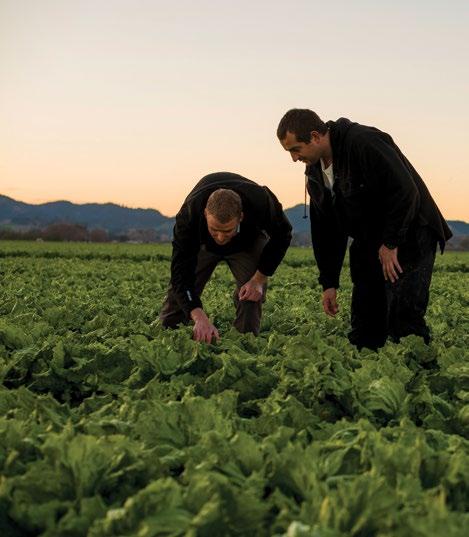
“Energy costs might be less of a problem over the summer, [but] the worry for the coming winter will still be there and some growers in the far south do need to heat year-round to some extent,” Dinah says.
Despite the tough times, growers are trying to remain optimistic.
“New Zealand fruit and vegetable growers deserve a big pat on the back for continuing to provide the consumer with a wide variety of quality fresh food year-round, despite the challenges of the past few years,” Robin says.
“Where there are challenges there are also opportunities. Nearly all growers are optimists and gamblers, or they wouldn’t be doing what they do. Those who navigate through all the challenges and adapt to be still there in a couple of years’ time will be in a good place.”
Horowhenua market gardeners will be glad to put 2022 behind them after hail, a wet winter and flooding destroyed crops and made it hell for harvesting teams.
In May, hail decimated much of John Clarke’s green vegetable crops at Woodhaven Gardens. He says he has never seen anything like it in more than 40 years of market gardening.
“We had coleslaw in the paddock. Could have supplied KFC,” John says.
John has more than 800 hectares planted in vegetables and says the hailstorm was one of several leading into winter, destroying about 32-ha of crops such as silverbeet, celery, lettuce and cabbages.

“You don’t want to do the sums,” John says.
The worst winter John has ever known followed and he says they could not get on the paddocks to resow crops. When they could resow, they mulched the crops sitting in the soil and planted back into them. The crop losses and planting delays have created holes in their production through to mid-December.
“Prices increased, but we didn’t have the volume to capitalise on the price,” he says. “It was extremely difficult physically for harvest teams too. They were never dry, and the crops were shitty and that’s hard work when you’re cutting bad crop. A shit of a year.”
John employs 210 staff for the bulk of the year and increases to 230 through the zucchini harvest, with Recognised Seasonal Employer (RSE) scheme workers topping numbers up. He says vegetable growers are not allocated enough RSE workers and come off second best to other industries with higher allocations.
Trying to attract Kiwis to work on market gardens is “100 percent difficult”, he says.
“We’re in the gutter with labour. We are about 20 [workers] short and will be short all summer. You can’t harvest all the crops, so you choose on market price. What that means is we are letting other people [growers] into the market.”
John says there were about 10,000 Working Holiday Visa (WHV) workers in the country this November, compared with about 90,000 during the same period pre-Covid-19. Even if WHV workers did not work in market gardens, he says they help free up other potential workers for growers.
“We’re hoping for some, but not expecting lots,” John says. “It’s hard to attract them to market gardens when they can pick cherries or make coffee.”
Levin grower, Chris Pescini, has a potato crop on the outskirts of Levin that was halved this year after being hammered by 250mm of rain in December 2021. He replanted 12-ha that was destroyed and says they should have replanted the bulk of the crop. Now he has missed out on early season potatoes because wet weather delayed spring planting.
The Pescini family also grow onions which had similar challenges,
though prices were decent due to short supply. Higher prices do not compensate for lower yields though, and he says it was a season where he “had to talk nicely to the bank again.”
Chris describes himself as a fourthgeneration grower who has been in the business for “a couple of haircuts” – although this past season was the toughest he has been through, he says.
This season, his onion crop was also sown late due to the rain and wet ground, but Chris says they are “not looking too bad” now. The onions are usually harvested from February, but this season the harvest will not kick off until mid to late March due to the later planting dates.
Losing the early potatoes is a blow to Chris’s operation as the pre-Christmas market usually provides good cashflow. Now his first potatoes will not be harvested until February.

The coming season is looking more promising, as long as growers get a bit of rain every now and then to top up the irrigation.
“Irrigation keeps them [the crop] alive until you do get a rain,” Chris says.
One business that came through the hail, wet winter and flooding relatively unscathed was Petterson’s Asparagus.
John Clarke has more than 800 HECTARES PLANTED IN VEGETABLES and says the hailstorm was one of several leading into winter, DESTROYING ABOUT 32-HA OF CROPS such as silverbeet, celery, lettuce and cabbages
Colin Petterson grows 23-ha of asparagus near Levin, producing about 100,000kgs of spears each year. Harvest begins in mid-September and flows through to Christmas. This year, September was brutal with the flooding, but Colin says October turned into a productive month.
“The rest of the asparagus regions weren’t so blessed, while we had good temperature and good growth and managed to capitalise on that,” Colin says. “Prices were good and volume was constant and quality okay. In the Horowhenua, we usually don’t get to enjoy that.”
As production in other regions picked up, the market was being flooded with asparagus and Colin took measures to prevent oversupply, including closing crops up or harrowing them over.
“There’s no point picking it for the sake of picking it,” he says. “You have to be mindful of where you spend those dollars now because you don’t want to pick just to break even.”
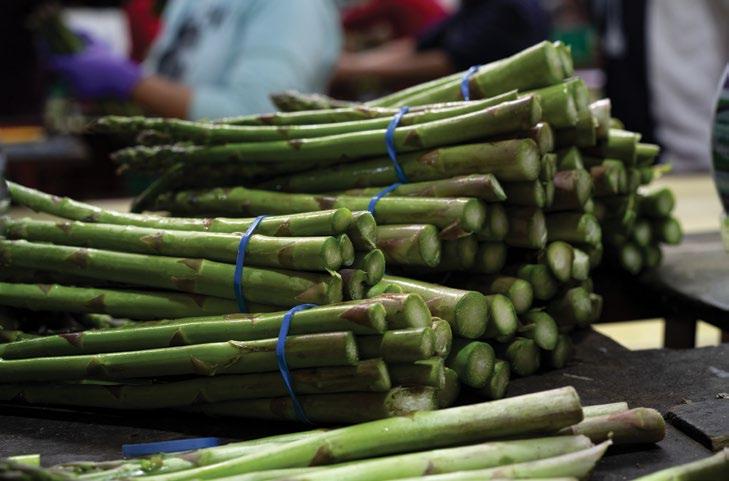
The domestic market has an oversupply of asparagus through its short season and growers do not have the ability to spread the crop out
The cost of labour is a problem and though the government is pushing for automation, Colin says some crops may never see automation and for others it is years away.
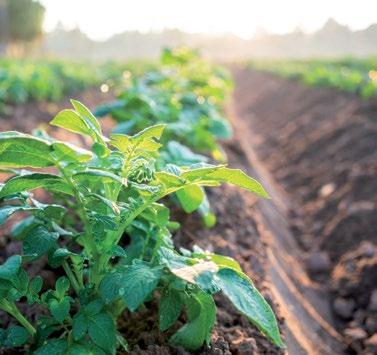
“To try and duplicate what a human does in robotic style isn’t easy in some crops,” he says.
While returns for asparagus are similar to other years, Colin says increasing production costs are taking a toll on the business.
“It is having an impact and it will be a more severe impact longer term.”
driving stock trucks around the country, until next season. Growers of covered crops such as strawberries have a different view of 2022. Cam Lewis from Lewis Farms says New Zealanders are getting used to being able to buy good-tasting strawberries through to autumn. He says there is good supply of strawberries through to the end of May now and customers are willing to pay more for a good strawberry with a recognised brand that has quality flavour.
The lack of sunshine during the gloomy spring weather meant there was less light in the poly-tunnels though and the crop got off to a late start.
The domestic market has an oversupply of asparagus through its short season and growers do not have the ability to spread the crop out. Export is being explored again, but so far, he says it is only breaking even financially. In the past, Japan used to be the “goose that laid the golden egg” for asparagus growers, but Colin says the cost of labour and freight makes it hard for New Zealand to compete.
“There are a lot of challenges and a lot of frustrations,” he says. “A lot of them won’t go away in the short term.”
Colin describes the challenges as insurmountable. Once the asparagus harvest is over, he is back to his other job
“That means you miss that good early money,” Cam says. “The middle [of the season] is a train wreck. Though because of that huge frost in the Waikato, the market has been still okay through to the beginning of November.”
Cam says the business is lucky to have RSE workers that move on from their asparagus crop to strawberries. “Without RSE workers we wouldn’t have a business anymore,” he says. “We can get people to come and work, but productivity is at an all-time low. RSE saves our lives.”
Outside, the asparagus crop survived the wet season because of the sandy soils. They have exported a small amount of asparagus to Singapore and Japan this year because flooding in Australia reduced the crop there.
Lewis Farms are hopeful those markets will enjoy the taste of New Zealand asparagus again and want more.
As production in other regions picked up, the market was being flooded

A.S. Wilcox and Sons is seeking to increase consumption of vegetables while growing its people and fostering a strong work culture.
A fourth-generation family-owned and operated business, A.S. Wilcox and Sons grows potatoes, onions and carrots for both the domestic and international markets. Wilcox has four main growing areas across the country. Northland provides the start of their early-season potatoes (Perlas), which benefit from limited frosts in the region. Pukekohe is the company’s headquarters, affectionately dubbed the “home farm”, with early spring production of potatoes, carrots, and onions in clay loam volcanic-rich soil. The soil is famous for producing long keeper onions. Further south in Matamata, the good, free-draining soil with a sandy base, helps produce summer potatoes, carrots and onions. Carrots and winter potatoes are grown in Ohakune through the summer, after being planted out in October and November. Stored in the ground through winter, the carrots and potatoes are easy to dig from the volcanic ash soil. It’s the ideal region in North Island for washed Red Jacket potatoes, which love the winter alpine-like conditions.
They have a central packhouse at their Pukekohe site and operate a packhouse in Rakaia where they collaborate with growers in the mid-Canterbury region. Late-season potatoes, carrots and onion crops thrive in the productive soil and climate here.
Growing across these various geographical areas ensures a continuous supply of quality products. It also means that the crops are facing varied weather conditions across the different seasons.
Wilcox managing director, Kevin Wilcox, says 2022 had its share of weather-related impacts.
“The extremely dry period in parts of the North Island from the middle of December through to the middle of February put a lot of pressure on all three of our vegetable crops,” Kevin says. “Still, the significant impacts of weather events are a given in primary production. Vegetables are no different and I believe this is something that we, as growers, know to expect.”
There have been other variables to contend with in recent times too.
“Last year, the global impact of the Covid-19 pandemic disrupted export freight with congested ports, labour shortages and reduced shipping lines,” Kevin says. “About
35 percent of our revenue is in export onions, sent via sea freight. Through 2022, not only were we a lot more expensive but we also couldn’t guarantee when our product would turn up. It probably has been the single biggest challenge for our business. Although some of the problems around export freight are easing up, this will most likely continue to be an issue in the year ahead.”
Despite such difficulties, encouraging people to eat more vegetables is key, says Kevin.
“Yes, there are a whole lot of challenges — regulatory, the changing environment, input costs, social licence issues and more, but ultimately, we are growing food for consumers and the reality is that as a nation, we aren’t eating enough vegetables. Improving consumption of nutritious vegetables, especially in New Zealand, is an important objective for us all.”
Ensuring their products are positioned to meet consumer needs is an integral part of their approach to achieving this goal.
“We are focussing on how we can make our products more relevant to the consumer and then continue to keep them relevant,” Kevin says. “Each vegetable must be approached differently in this regard. Say potatoes, for instance. From a health perspective many people are reducing the amount of carbohydrates they eat.
“We front the reality that potatoes are in fact carbohydraterich, but they are also a source of fibre and other vitamins and minerals, including protein. So, how do we adapt? We consider smaller potatoes (like Perlas or Piccolos), that are washed and more convenient to cook with.
Carrots are an opportunity area for the business too, Kevin says.
“We provide a product like Beta Bites, a snacking carrot that has a different taste profile and can be used (eaten raw, or cooked) with little to no prep work.”
Wilcox markets its Beta Bites as perfectly sized, deliciously sweet, genuine snackable carrots that are ready to crunch on at any time. It fits in well with the social licence aspect too, as a healthy snack alternative.
“The vegetable industry in particular is massively underinvested in promotion and marketing,” Kevin says.
“The only significant major activity is price promotion. What signal does that send to the consumer? The industry (as a whole) must get better at telling our story and telling the story of our products. If we’re going to serve our customers and we want them to be excited about our products, then we had better be excited by them first.”
Kevin concedes that, “finding the money to invest in marketing and future technology can often be difficult for the industry, particularly with escalating costs overall. However, it can ultimately prove beneficial if we find a way to do it anyway.”
Wilcox recently invested in an onion peeling machine, allowing the business to increase productivity and redeploy staff to other areas when needed. The peeler also reduces food waste allowing Wilcox to use more of the crop.
“We support a high-wage economy and want to pay our people more” says Kevin. “So, we have to be better and we have to use technology to our advantage while engaging and training our people so we can afford to do that. It’s the labour cost per unit, not the labour cost per hour that’s important to us.”
Dean Langrell-Read, Wilcox’ marketing manager, says the company’s people-first focus is one of the reasons he loves working there.
“You feel valued and the feeling that you can make a difference is elevated because you really feel like you are a part of the same team. Wilcox has retained its family-business feel,” he says. “Good, honest and clear communication around expectations, successes and challenges, business goals, and more, has helped foster a healthy work culture.”
Operations manager, Simon Wilcox, says that work culture was evident during Covid-19, with the team putting in a “phenomenal effort” to keep operations running smoothly despite the uncertainties.
“Everyone was incredibly focused, determined to be at work and do a good job,” Simon says. “We had very low absenteeism.”
Kevin says Wilcox strives to be a values-led, purposedriven organisation, and people – staff, customers, consumers and the community – are at the heart of the company’s purpose.
“Vegetable growing is often perceived as peasant farming,” Kevin says. “Yes, [it] can be muddy and dusty, hot and cold and mostly outdoors. However, it requires immense skill and can be a rewarding experience.
“As an industry, we can provide better growth opportunities for aspiring candidates by pursuing excellence, innovation, and progress.
“We want our staff to have meaningful careers and be proud of our business and their role in it, because here at Wilcox we believe in growing great produce – and people.”
We want our staff to have meaningful careers and be proud of our business and their role in it, because here at Wilcox we believe in growing great produce – and people
Karn and Briar Dhaliwal have very clear goals as to where their horticultural business, Ohinewai Harvest, will go in the future. Thanks to their backgrounds working as fertiliser reps, rural bankers and agronomists, the 29-year-olds have an unwavering focus on the scale and efficiency of their operation as well as cost control.
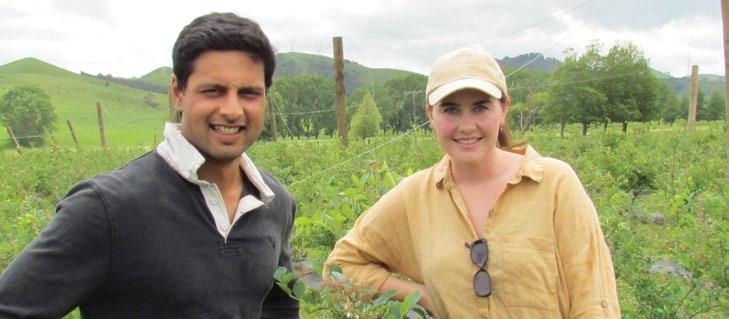
Karn comes from a dairy farming background while Briar (née Kay) is from the Hawke’s Bay, where her parents are asparagus growers. The couple met at Massey University where Karn was completing a Bachelor of Commerce in farm management and Briar was finishing a Bachelor of Agricultural Science.
“But I did slip in a couple of horticultural papers,” she says. They both worked in Hawke’s Bay for fertiliser companies, then in 2017, saw the eight-hectare block of land for sale opposite Karn’s parents’ dairy farm in Ohinewai, north Waikato.
It was in pasture and being leased to the neighbouring dairy farm before they bought it. After moving north they took a year to decide what to grow on the land while grazing 30 head of cattle.
“We thrive off a challenge, [but] it had to be a viable business,” Karn says.
They looked first at blueberries, then veered away from the idea. Kiwifruit wasn’t the right crop for them to begin with either, and annual crops were ruled out because they didn’t want to cultivate their fertile peat soils on a regular basis.
Karn and Briar visited a few successful blueberry orchards around the North Island and based on the information gathered they revised their decision, realising that blueberries could be a scalable and profitable crop with potential to export, and there were packhouses within half an hour’s drive. The crop was also ideally suited for their peaty soil.
The couple were welcomed by existing blueberry growers, keen to have new, young blood entering the industry.
“From those visits we were also able to develop a model that would suit our situation in terms of planting density, levels of inputs, variety choice and so on,” says Karn.
Four hectares of blueberries were planted out in winter 2020, comprised of three different varieties, Centra Blue®, Velluto Blue® and Sky Blue® – which produced seven tonnes of fruit last season destined for export to Australia. Now they have planted out another 3.5-ha while their older plants are being netted to protect from bird, hail and frost damage.
They did have some frost damage recently, but nothing on the scale of other Waikato growers. Being further north and with their plants less mature, there was only a 20 to 30 percent loss of flower.
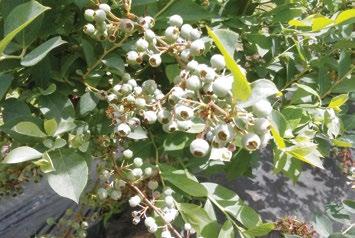
“We feel very fortunate our losses weren’t too severe as it truly has been a devastating frost event to many other growers in the Waikato,” Briar says. “But it’s been a learning curve and we realise we need to invest more in frost protection.”

Labour is always going to be challenging. While they only required four pickers during this year’s harvest, around 30 pickers will be required when their crop matures. They are working with the Ministry of Social Development (MSD) and are busy exploring the potential of attracting labour from nearby Huntly and Te Kauwhata, towns that other Waikato blueberry growers are less likely to recruit from. But blueberries aren’t the only string to their bow, with watermelons grown on leased land as well as pumpkins, and development of five-hectares of kiwifruit orchard well underway. The watermelons are grown on a different block every year – on a Te Kauwhata beef farmer and maize grower’s land. One hectare was planted four years ago, all hand transplanted; then three-hectares in 2020, sixhectares last year and 9.5-ha this year. They have invested in one key piece of machinery at a time that would improve efficiencies and have the most impact: opting first for a mechanical transplanter, then a mechanical mulch layer.
The biodegradeable mulch made from corn starch fits with the operation’s sustainability goals and suits watermelons well, as the land will go back into grass. Karn and Briar do all the melon work themselves; laying the plastic mulch, transplanting and inter-row spraying until harvest where a small crew is required to get the crop off in a timely manner. It is sold locally, with the same going for the pumpkins that are grown just outside Ohinewai on another eight-hectare leased block. They started off growing butternut pumpkins, then a mix of this variety and crown pumpkins, before opting to only grow the crown pumpkins.
“We use contractors to disc, power harrow and plant the
pumpkins, and then maintenance through to harvest is all us,” Karn says. “Compared with our other crops it’s a slow burn, and through the winter it’s good for our cashflow.”
Kiwifruit plants are growing on the blueberry orchard in a nursery, ready for transplanting into the kiwifruit block and grafted over to red fruit.
“We don’t do things for the short term, only things we can do for 20 years,” Karn says. “And we don’t listen to the talk around town but focus on the fundamentals.”
Last year Karn took out third place in the Young Vegetable Grower of the Year Competition and was called on to emcee this year’s award ceremony. He has also spent a year as an intern director for Vegetables NZ, getting a close-up view of how board decisions are made.
“We have got to where we are so far by sacrificing many weekends, doing late-night shifts and using annual leave to do as much of the work ourselves as possible,” Briar says. “Karn isn’t afraid to pick up the phone and cold call where opportunities might exist for the business, whether that’s marketing of our products or finding more lease land.”
Their longer-term plans are to fine-tune their operations, then bring in a manager for part of their business to help with work-life balance. Ultimately, they would like to purchase 100-ha of land, giving them the space needed to get into running dry stock and utilising their own land for annual cropping.
When it comes to other young people getting into the horticulture industry, Briar bases her optimism on people always needing food. But she says diversity is also key to their business.
“If one or two of our crops aren’t having a good year, hopefully the others will be,” she says.
Karn believes the right mindset is paramount.
“Deal with the right people who can help you develop your business and keep challenging the status quo. Our generation is going to bring the industry forward, so it’s up to people like us.”
Blueberries which will be ready for harvest from FebruaryIt has been a long and expensive journey, but a major Gisborne-based grower says the results of their first foray into undercover cropping has been even better than they expected.
KRISTINE WALSH reports.
They thought it would be good, they hoped it would be better than good, but major Gisborne-based grower, LeaderBrand, did not know just how great their new covered cropping facility would be.
“You can have these great ideas and do all the research in the world, but it is not until you are actually underway that you can get solid proof of success,” says LeaderBrand chief executive, Richard Burke. “That's why our first harvest from under cover is such a major milestone. The results are even better than anticipated and that's what we're really excited about.”
The results have certainly been a long time coming.
The project got the go-ahead in October 2019 when LeaderBrand secured a $15 million loan to part-fund the construction of its 11-hectare undercover facility.
The first Covid-19 lockdown in March 2020 hindered construction at the Makauri site on the Poverty Bay Flats
just out of Gisborne, as did subsequent lockdowns, shipping delays and border restrictions.
In the last six months of the build, Gisborne was hit by a trio of crop-drowning rain events that reminded the team of just how important their project could be.
“So, it was gratifying to get the first part of stage one our smaller, 3.5-hectare greenhouse finished on time,” Richard says. “We were able to start work on the soil and trials in May, get our first crop of spinach planted in July and have it harvested in early October.
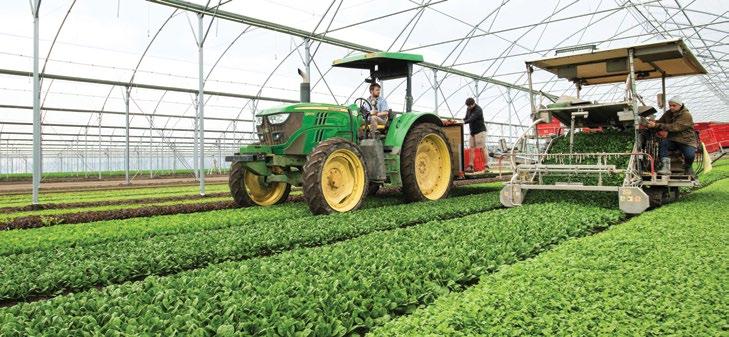
“That means we will have lots of learnings under our belts by the time the larger greenhouse – another seven hectares – is completed in March or April next year.”
The water side of the project was sorted with the early installation of a one-million-litre ultraviolet-treated water tank and 40-million-litre dam, fed by catchment from the greenhouse roof.
Before they could plant the first seeds, however, the team had to rehabilitate existing soil compacted by construction machinery and build on it with a house-made compost, of which it will need two applications of around 500 tonnes a year.
Then they put in a range of trial seeds before planting the
big crop of baby spinach that was harvested towards the end of October.
“It was fantastic to get that crop to market but really we're still at the trial phase, just doing under cover what we would normally do outdoors,” Richard says. “It's amazing how much we have already learned, how simply taking away those unpredictable elements of wind, rain and bird damage can influence everything from germination to nutrient management to leaf health in strikingly obvious ways.
“What it tells us is that we can use facilities like this for delicate crops to continue driving Gisborne as the salad capital of New Zealand.”
Not having the weather to contend with means LeaderBrand will be able to focus on soil quality and critically, crop rotation, increasing the 2.5 rotations a year expected in outdoor conditions to six, or even more.
“That turnaround is what is going to make it work in terms [of] getting the financials to stack up,” Richard says. “So, the next six months will be devoted to proving that it can be done in a sustainable manner.”
Now that they've done the groundwork, literally, the next step will be sourcing equipment of the right size and function to suit the space.
While that is not cheap, Richard says the win for both LeaderBrand and its customers will be an increase in produce quality and better consistency of supply.
“We've come off a winter of high prices for consumers and while that's easing off now, it just takes another few big weather events to set us back again.
“As far as we're concerned, if we're not presenting fair value that makes fresh produce accessible to everyday New Zealanders, then we're not doing our job.”
At 3.5 hectares, the new greenhouse represents just over 0.1 percent of LeaderBrand's total farm area, but Richard believes that even though it’s a small project, it has a big future.
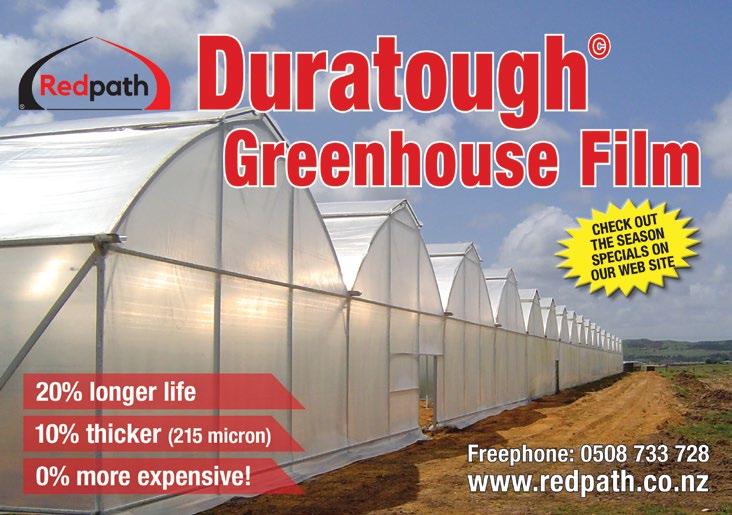
“Ultimately, it will revolutionise the way we farm and that's why this first harvest, after three long years, is so important to us,” he says. “A hell of a lot of work has gone into it during times that we've never experienced before, all while the team has continued to manage the rest of the business.
“I'm super-proud of them for pushing through to take what we thought might be a good idea to the point where it is even better than we imagined.”
The past year has been a continuation of stresses and struggles for horticultural enterprises across the South Auckland region.
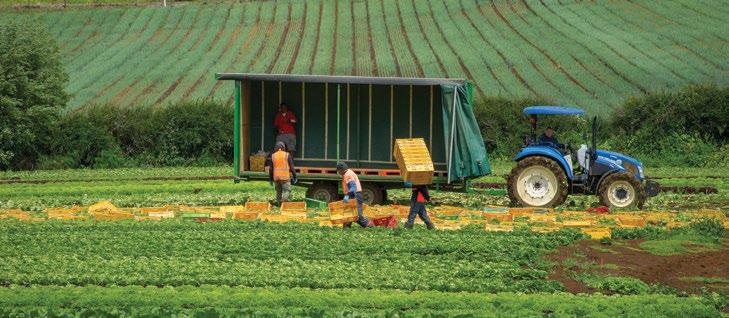
NZ Hothouse is a major under-glass growing operation in the Auckland area, employing around 300 people and representing about 25 percent of the nation's tomato industry.
Managing director Simon Watson says the labour situation is beginning to rectify itself.
“We are under less pressure now than we were in the middle of the year, as there have been more Working Holiday Scheme visa people fronting up. We have gone from a disastrous situation where our workforce could be up to 20 percent down, to a position where on a good day, we have enough labour.”
The vagaries of the weather can also have an impact on under-glass growers.
Weʼve had a mild winter. This is good as it doesn't cost as much in gas for heating, but it’s bad as we get more insect whitefly pressure.”
Simon says inflation levels not seen for a generation have had an impact on the cost of fertiliser and freight.
“Fertiliser had been going up by about 82 percent, yearon-year, which was a biggie. However, the cost of freight is
coming down so the cost of fertiliser should reduce too.” Gas is a major cost in glasshouse growing.
“We were lucky we had a mild winter and plenty of rain, so spot energy prices did not spike.”
About 90 percent of NZ Hothouseʼs product goes out into the local market and much of it through the supermarket chains. Simon says the government's review of the operation of supermarkets was a ʻdiversionʼ from other large issues facing the country, “like the economy tanking and the struggle with rampant inflation.”
“The supermarkets are a soft target. Supermarkets are very big employers and generally supportive of growers. Why didn't they focus on things like the banks and insurance companies?”
Simon says exports have not returned to pre-Covid-19 levels. “Pre-Covid, we were exporting about 10 percent, which is now down to about three percent. Australia is still shut to us – an insect issue – plus we do a lot of airfreight and the airlines have not recovered.”
“We have been told it could take 18 months to two years to come back to pre-Covid levels. We need wide-bodied jets and the capacity is not there. They just don't have the aircraft.”
Labour and the cost of energy are the big factors in this year's business experience for specialist greenhouse
propagators, Gellert’s Nurseries, says owner Steve Gellert.
Gellerts is divided into two parts. One part serves a critical role in providing millions of vegetable seedlings to other large commercial hothouse operators, while the other part grows large quantities of the vegetables for the supermarkets.
Gellert’s Karaka operation has 3.2 ha under glass. However, a new 8200 square metre state-of-the-art growing facility, begun more than two years ago, remains incomplete due to 'massive' shipping delays and the struggle to get skilled technicians in from Holland, Steve says.
“Labour is impossible to find. There's no point in offering more money if no one wants to work. We have three labour-hire companies trying to find us workers. But most of the people they find for us just don't turn up.
“We need a certain base level of labour to operate. Everyone I know is looking for labour. I’ve been in business for 35 years and I haven't seen anything like it.”
Glasshouses are major energy users. In the North Island, this energy is traditionally in the form of natural gas.
“While there has been some relief in gas supply from Taranaki and a wet winter has held down electricity prices, the government continues to boost taxes on gas as part of its drive to decarbonise New Zealand,” says Steve.
“Pre-Covid we were paying $9.50 / gigajoule (GJ) for gas. Now we’re paying $19.50 / GJ, which includes $4.50 / GJ as a carbon tax. I understand the government intends to double that.
“Obviously the tax is to push us out of gas. I would love to go to another fuel like wood waste. But that would cost $5 million and I don't have the money, plus burning wood still emits carbon dioxide.”
Wet weather has hit Pukekohe vegetable grower Allan Fong hard.

“It was exceptionally wet. In June it rained for weeks, day and night. Crop was lost, some ploughed in, some left to rot,” says Allan.
“We have eight weeks of production in the ground at any time. We are governed by the weather and our customers all the time – we pick to order. In November, we were selling everything cheaper. For example, for baby cos
About 90 percent of NZ Hothouse’s product goes out into the local market and much of it through the supermarket chains
lettuces we usually get about $2.50 wholesale for two, but we’re getting $2.20 at the moment. If they go below $2.00, we can't make anything.”
Costs continue to skyrocket with chemicals up 20 to 25 percent, fertiliser 60 to 80 percent, seed up 5 to 10 percent, and the price of diesel has doubled.
Labour challenges have forced Allan into becoming a landlord.
“Covid stopped people coming in on Working Holiday Scheme visas. That killed off a lot of the backpacker hostels and homestays that provided accommodation.
“However, people on Working Holiday Scheme visas started returning a couple of months ago, and we have 45 working for us at the moment. But I've had to rent four houses in Pukekohe to provide accommodation and hire a manager to look after it all. It's a headache. I didn't want to become a landlord.”
Head of the more than 60-year-old family business, Allan, 66, is working to get his nephews and his son into growing but is concerned at the hurdles facing younger growers.
“I hope the next generation can handle it – all the compliance, and environment and climate policy. This is a challenge for the younger generation, let alone trying to run a viable business and having enough on top to re-invest.
“The government should leave business to do what is best. When they start telling us how, they create barriers and inhibit innovation. Why would we do something when we’re not making any money out of it?
“Let’s have some incentives and get immigration sorted
out. Smart, intelligent people from overseas are knocking the door down trying to get into New Zealand. Without good people, what are we going to do? They say New Zealand has three percent unemployment, but most of those are unemployable.”
Fellow Pukekohe grower and president of the Pukekohe Vegetable Growers Association, Kirit Makan, also cited labour as a core problem.
“Growers are still finding it difficult and this will extend into the new season. It affects our packing side the most; so we run slower and take longer. We've had increases in wages and the labour shortage is also pushing up labour costs. It's hard to pass on these increases. It means with our onions, we'll be looking at greater mechanisation.”
Pukekohe has some of the best soils in the country for growing vegetables. This makes it a focal point for the new National Policy Statement for Highly Productive Land (NPSHPL), which gives regional councils three years to identify, map and manage highly productive land in their regions to ensure it is available for future food production – in consultation with their communities. During this transitional period, councils will reference highly productive soils as Land Use Capability (LUC) Class 1, 2 and 3.
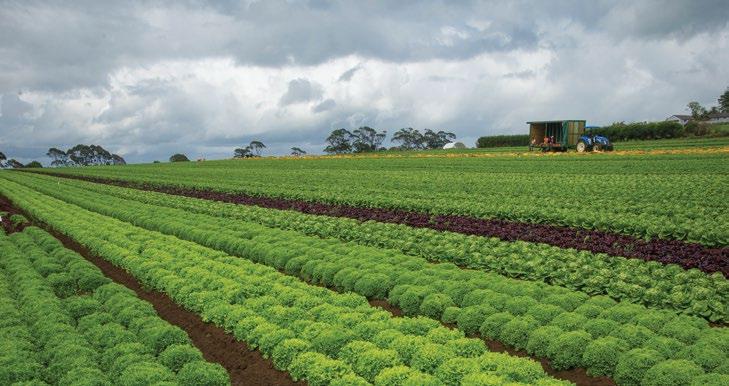
“The NPSHPL has a range of down-line effects, which have yet to be properly thought through,” Kirit says.
“We’ve had some pretty lively conversations at our meetings. While most growers realise the need to protect highly productive soils, there are a variety of issues to be faced including possible effects on the value of the land. Soil classifications, set many years ago, may also need to be revisited.”
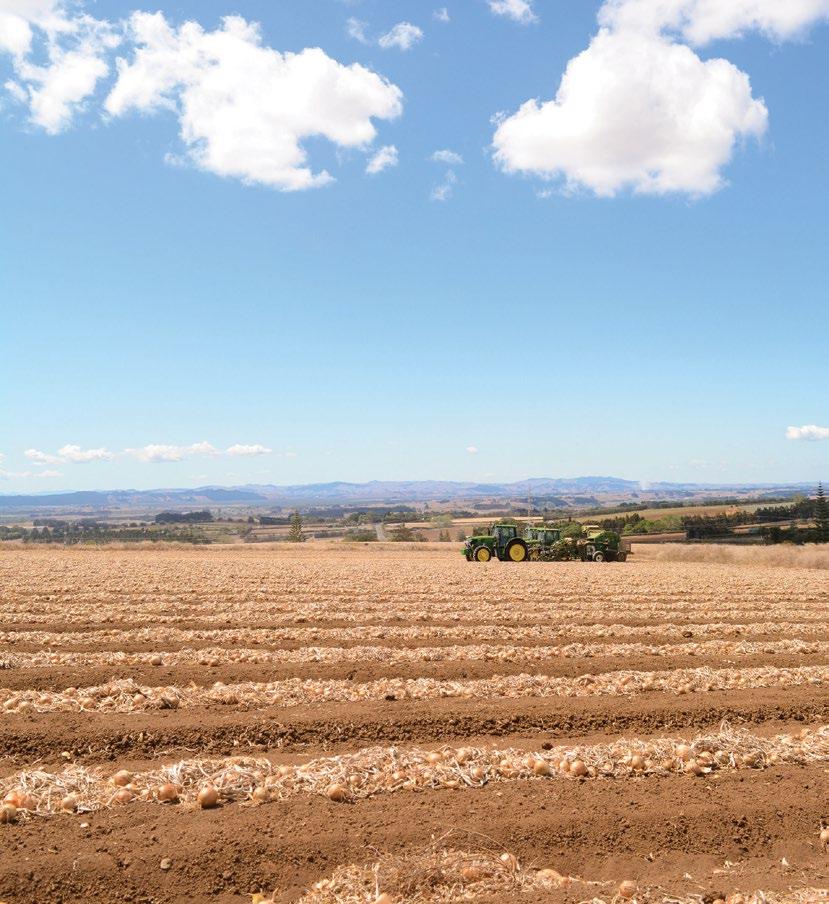
Growing vegetables seems to be like juggling while standing on marbles. Then it rains.
Built upon many years of research and grower experience, the Sustainable Vegetable Systems (SVS) project is developing a nitrogen budgeting tool. A key output will be guidance on fertiliser nitrogen application rates. It is also anticipated that the tool will build industry knowledge and further enquiry as growers delve deeper beyond the entry level defaults to tracking the impact of crop residues and soil nitrogen mineralisation.


To help explain this, I have been using the analogy of a nitrogen budget compared to a financial budget. There are a series of inputs (fertiliser, soil mineralisation, and crop residue breakdown) or income, and outputs (harvested crop, volatilisation, and leaching) or expenditure.
The soil mineral N, the part that is immediately available to the plant, is the bank balance. Where this analogy falls over is that at the end of each day you have a single absolute bank balance. In contrast, the soil mineral nitrogen level must be representative of a wide range of conditions across a paddock. The sources of variability include soil type, slope, compaction, irrigation distribution, crop history, crop growth, harvest index, then throw in variability down the soil profile.
It is just about enough to throw your hands up and walk away. However, you subconsciously deal with that variability every day, and growers aren’t walking away. Okay – some are, but I don’t think that is due to the variability of growing.
What the budget does, be that financial or nitrogen, is that it documents what you anticipate will happen and then you plan accordingly.
Confidence in that plan or budget is built up by understanding and reducing the variability as much as is practical.
Vertically through the soil profile, mineral nitrogen varies considerably – even within the cultivated zone.
Soil testing guidance for vegetable cropping is often to sample to 15 centimetres. However, this is less than the active root zone of many vegetable crops. For most crops, sampling to a depth of 30cm will be more representative of how much nitrogen the crop can access.
One of the barriers to soil testing is the time and effort spent doing it, and increasing the sample depth only compounds this problem.
One possible solution is to continue sampling to 15cm and simply double the results. To be confident that the resulting nitrogen prediction is reasonably accurate, we analysed a large number of samples from across the country.
Table 1 demonstrates that in most cases, simply doubling the mineral nitrogen content from a 15cm sample will get reasonably close to the result obtained by taking a 30cm sample. On average there was a less than 10% difference. This was a difference of just 4 kgN/ha, with the quartile range of -3 to 8 kgN/ha.
Table 1. Measured verses estimated mineral N to 30cm
Gold standard - measured Estimated Diff. from Gold standard 0 – 15 cm 15 – 30 cm 0 – 30 cm 0 – 30 cm (0 – 15 cm x 2) kgN/ha %
Average 26 22 48 52 4 108%
Lower quartile 8 8 17 16 -3 92%
Upper quartile 35 25 57 71 8 125%
Average
< 50 kg N/ha in top 15 cm 17 17 35 35 0 100% > 50 kg N/ha in top 15 cm 81 53 134 162 28 121%
What we found was that when the mineral N levels were greater than 50 kgN/ha in the top 15cm, then doubling the 15cm result to estimate nitrogen in the top 30cm resulted in an overestimate by about 30 kgN/ha. On average, there was 130 kgN/ha sitting in the top 30cm; doubling the top 15cm result estimated 160 kgN/ha. Generally, there is more nitrogen in the top 15cm, particularly at higher nitrogen levels, hence the overestimate. As nitrogen levels decrease, the differences between the layers becomes less
Mineral nitrogen to 30 cm (kg N/ha)
100
80
60
40
20
0
y=0.798x+6.944 R2=0.80395
distinguishable and certainly much less significant from a crop nitrogen management perspective.
Based on the above analysis, simply doubling the 0–15cm sample to estimate nitrogen to 30cm could be used by growers to save time. However, caution should be taken after rainfall events (N might have been flushed out of the top 15cm and now be sitting at 30cm) and at higher nitrogen levels.
The Sustainable Vegetable Systems programme has conducted nearly 300 Nitrate Quick Tests across four of the regional ‘Workstream 2’ sites.
For each date and depth, the test results were averaged and compared to laboratory nitrate results. Overall, there is a strong correlation between laboratory results and the Nitrate Quick Test (Figure 2).
Generally, what we found is that the N Quick Test returns a smaller quantity of nitrate than the laboratory potassium chloride (KCl) extraction (nitrate component), with the difference increasing as the quantity of nitrate increases.
Figure 1. Correlation between actual mineral nitrogen test results to 30cm and doubling mineral nitrogen to 15cm.
Quick N (mg NO3-N/kg)
R² = 0.69
We found the average difference between the two test types is approximately 5.4mg NO3-N/kg dry soil, which translates to approximately 8kg N/ha difference. This should provide enough accuracy and confidence that the rapid results are a sound basis for making nitrogen management decisions. The experience of other growers who have been using the N Quick Test, is that with time accuracy improves, particularly if one person can be made responsible and good systems are put in place.
In general, the N Quick test was underestimating soil nitrate levels. Therefore, they are conservative which gives greater assurance when used as a guide to ground truth what is happening in the field against a nitrogen budget.
Nitrate Quick Tests can be ordered from Lab Supply and the Foundation for Arable Research (FAR) has a very good guide.
You can view the SVS N-Quick test guide on the Potatoes NZ YouTube Channel: https://youtu.be/UrY8yAvtVvY
Each year the World Soil Day campaign focusses on a different theme – ‘Halt soil salinisation, boost soil productivity’ in 2021 and ‘Keep soil alive, protect soil biodiversity’ in 2020. The 2022 theme is ‘Soils, where food begins’, highlighting the value of soil for food production, better nutrition and healthy diets.
The soil beneath our feet is a world made up of organisms, minerals and organic matter that supply humans and

animals with food through plant growth. Soil organisms consist of micro and macro-organisms – the ones we can see and the ones we cannot. Those we cannot see are micro-organisms and consist of a multitude of bacteria, fungi, algae, actinomyces and protozoa. A healthy soil can host as many as 20 billion micro-organisms in a teaspoonfull of soil, but many agricultural soils contain only a tiny fraction of this number, and some extremely depleted and abused soil could be classed as biologically dead. Larger organisms such as nematodes and earthworms are also critical to fully functioning soils. Creating an environment in which these invertebrates and micro-organisms can thrive is important for the rebuilding and repairing of soil which has been abused in the past.
Just like us, soils need balanced and varied inputs of nutrients in appropriate quantities to be healthy. When
Since 2013, the United Nations has designated 5 December as World Soil Day, recognising the importance of preserving and maintaining the few centimetres of topsoil upon which terrestrial life depends.
crops are harvested, nutrients are removed from the soil. Nutrient deficient soils produce nutrient deficient plants, causing hidden hunger for more than two billion people worldwide. Because of the variety of food available to us here in New Zealand, these deficiencies are not so common, but even so, many of us take additional supplements containing the likes of calcium, magnesium, zinc, boron, iron and selenium to maintain our health and strength.
over the years will not have helped beneficial microorganisms and earthworms. Comparing the two halves of this property, the soil on the cropped land seems lifeless, hard and compacted, lacking oxygen and tilth; whereas the other half is friable and alive and smells fresher and more earthy than the clay glug of the cropped half.
Another farmer client near Mangatangi, east of Pukekohe, has a similar legacy on part of his farm which was leased to vegetable growers over 30 years ago. The cropped block still performs poorly and the friability and tilth of the soil is severely compromised. From observing first-hand the damage to the long-term productivity of soil from implementing unsustainable cultivation and husbandry practices, I understand the importance of this United Nations World Soil Day that highlights the need to take better care of our productive land.
For many pastoral farmers here in New Zealand, deficiencies in their livestock from unbalanced soils are countered by giving their cattle and sheep additional feed supplements containing essential macro and micronutrients via drenches, injections, salt licks, or minerals added to silages or meals, feed in sheds, feed pads or out in the paddocks. If their animals are not given these mineral supplements, their health and output is compromised. These mineral elements can also be applied to the soil as fertiliser nutrients and taken up by plants, negating the need for farmers to give them directly to their livestock. A nutritionally balanced soil will result in healthy plants which will produce healthy animals and ultimately, healthy humans. This is not rocket science, yet it is often neglected. So too in horticulture, there is an over emphasis on nitrogen, phosphorus and potassium and a neglect of minor elements and trace elements, which are often not tested for or are completely ignored.
When it comes to sustainable soil management, intensively cropped horticultural soils rarely leave a great legacy. Last month I was contacted by the owner of a 16-hectare block at Mauku, west of Pukekohe, whose property is made up of two halves – one which has been in continuous pasture, the other which was leased by a vegetable grower for a number of years. The ex-vegetable growing half is now significantly poorer performing than the half which has been in permanent pasture, grazed by livestock. When the owner got the leased half back from the grower, the new pasture performed well for the first couple of years, living off the high level of fertility left in the soil, but after several years, the new pasture started losing its vigour and the difference between it and the old permanent pasture became starker. The cropped half has little soil structure through soil pulverisation from intense cultivation for making fine seed beds for vegetables. From repeated inversion, the organic matter level on this cropped half is now significantly lower than the original pasture and spraying the vegetables with fungicides and pesticides
As a nation, our soils have not had the centuries of abuse and nutrient depletion which many parts of Africa, Europe and Asia have suffered. It is important we adopt growing techniques which leave our soils in good heart for future generations. There is a quote attributed to the Red Indian chief Seattle which I think is very apt for celebrating this World Soil Day: We do not inherit the Earth from our ancestors; we borrow it from our children




AGPRO NZ will be the product distributors of Chariot Insecticide from December 2022 says Mark Freeman of AGPRO NZ.
Chariot contains 120g/l Spinosad and is a welcome addition to our range for our existing vegetable clients and we look forward to supplying Avocado, Citrus, Vineyards, Kiwifruit and Pipfruit growers with this chemistry.
Spinosad was first approved here in 1998 to control a selected range of insects in fresh vegetables for both domestic and export sale. It has a unique mode of action and controls pest species that are resistant to conventional insecticides. Being a group 5 insecticide no more than 4 applications should be made to any crop in one season. Crop monitoring for pest thresholds and the applications, are thus very important.
www.agpro.co.nz
The soil beneath our feet is a world made up of organisms, minerals and organic matter that supply humans and animals with food through plant growth
 Georgina Griffiths : MetService meteorologist
Georgina Griffiths : MetService meteorologist


After a record wet winter for many regions of the country, spring saw a somewhat more settled weather regime set up over New Zealand. More highs than usual sat over the South Island in the September to November period, resulting in soil moisture levels dropping slightly more sharply than normal for the time of year across the east of South Island (figure 1). In contrast, frequent easterly winds produced a wetter than normal spring for the northeast of the North Island, with soil moistures sitting at saturation in mid November.
Compare the rainfall accumulations (figures 2 to 5) in the northeast of New Zealand, e.g., Kerikeri and Napier, which saw above normal spring rainfall and rainfall accumulations accruing at a higher (steeper) rate than the climatological normal. In contrast, spring rainfall totals in both Blenheim and Christchurch were normal to below normal, meaning the accumulation slope was slightly flatter than the average increase.
It has been many, many months since New Zealand experienced a cooler than average month – because we’re operating against a background of warming that affects us all.
Notably, temperatures were below average for most of October, across most of New Zealand, before a change to mild conditions in the last week of the month. The recipe
of above average temperatures has then persisted through the first half of November, across the country.
The plots shown in figures 6 and 7 show temperature anomalies – deviations from the long-term climate – for both Napier and Christchurch and both locations show the same general trend in temperatures (when compared to their norms).
Looking ahead, many growers and farmers are all set to see another La Niña summer – the third in a row. Remembering that each La Niña summer can be somewhat different, you can work the averages and plan for a general ‘wetter-in-the-northeast and drier-in-the-far-south’ summer to play out. Or, you can contact the long-range team at MetService for a quote for a seasonal forecast, and keep up to date with the MetService long-range forecast at http://metservice.com/rural/monthly-outlook. Better still, sign up to the free Monthly Outlook emails at www. metservice.com/emails

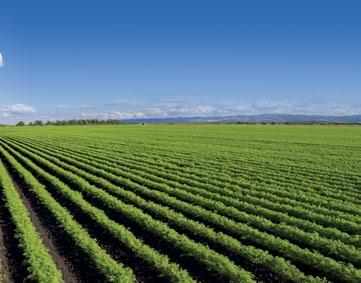
Rainfall accumulation plots show a large contrast between northeast NZ and eastern South Island: Kerikeri Napier
Figure 2: Kerikeri annual rainfall accumulation (mm) for the last five years (2018 to 2022). The annual average rainfall accumulation is shown in black
Accumulated Rainfall (mm)
Figure 3: Napier annual rainfall accumulation (mm) for the last five years (2018 to 2022). The annual average rainfall accumulation is shown in black
Blenheim Christchurch
Accumulated Rainfall (mm) Accumulated Rainfall (mm) Accumulated Rainfall (mm)

Figure 4: Blenheim annual rainfall accumulation (mm) for the last five years (2018 to 2022). The annual average rainfall accumulation is shown in black
Figure 5: Christchurch annual rainfall accumulation (mm) for the last five years (2018 to 2022). The annual average rainfall accumulation is shown in black. The record wet winter in Christchurch is obvious in the dramatically steep slope of July 2022 (red line); while a slightly drier than usual spring period is evident in the flatter-than-average slope through September, October and November

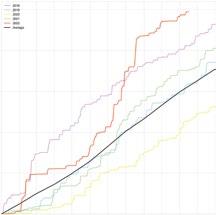
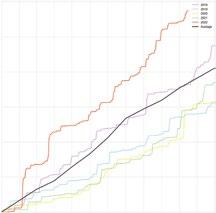
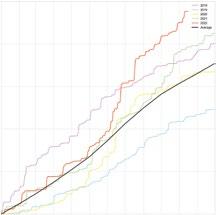


Figure 6: Napier daily temperature anomaly (difference from the daily average) across 2022. The daily average is calculated from the 30 year climatology. Much of October ran cooler than average, consistent with cooler onshore winds in the Hawkes Bay. In the last week of the month, there was a change to an unusually mild period
Figure 7: Christchurch daily temperature anomaly (difference from the daily average) across 2022. The daily average is calculated from the 30 year climatology. Much of October ran cooler than average in Christchurch, too, before a change to an unusually mild period at the end of October

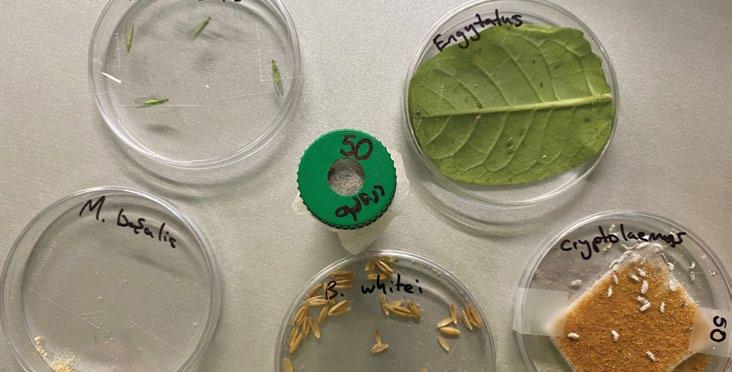 Dinah Cohen : Tomatoes NZ Inc business manager
Dinah Cohen : Tomatoes NZ Inc business manager
TomatoesNZ hopes that you have secured some help either tapping into local seasonal workers, like students finishing school or university or backpackers who have been arriving in New Zealand – over 14,000 since our borders re-opened.
Over the past few months, TomatoesNZ has been trying to invest levy money on projects that are beneficial to as many tomato growers as possible. To that end we have been making progress on several fronts:
• Engaging with the Environmental Protection Authority (EPA), circulating a guide to registering for industrial
allocation. This is important as only those registered before the 31 December 2022, will qualify for industrial allocation units/credits in 2023. This is essentially the government’s way of compensating growers such as yourself, for paying Emissions Trading Scheme (ETS) carbon tax, because growers in other countries might not pay such taxes. You don’t even need to pay ETS to qualify for this compensation. Signing up on the ETS register isn’t as straightforward as it could be and we would appreciate your feedback on your experiences as we continue to work with the EPA to simplify this process and make it more user friendly (see page 61 for a message from EPA).
If you didn’t receive the guide by email or would like it again, please contact dinah.cohen@hortnz.co.nz
As we fast approach the end of the calendar year, we are aware that growers are in the midst of a busy time in the greenhouses and packing sheds.
•

At the time of going to print, we have seven growers nationwide involved in the A Lighter Touch programme trialling the ability of different beneficial insects to control whitefly. This is an extension on the project TNZ was involved in earlier this year, as the new trials are taking place in commercial greenhouses as opposed to a model farm – so the area and conditions involved are much more useful for monitoring the outcomes for all growers. We look forward to bringing you updates on this important work in 2023.
• TomatoesNZ general manager, Rebecca Fisher, and myself would like to wish you a good end to 2022. While we know that this year has held many challenges for growers, we look forward to continuing work with you in 2023 on the issues that are most prevalent. We hope that you’re able to take some time away from the greenhouse over the next couple of weeks to enjoy summer and catch up with friends and family.
• TomatoesNZ also has drafts of two energy transition reports, partly funded by the Energy Efficiency & Conservation Authority (EECA) and the Horticentre Charitable Trust. These provide a comprehensive guide to the options available for non-carbon energy. While the focus of the reports was specific to two growers – one North Island based using recycled oil, the other South Island based using coal – we hope that knowledge gained can be used by any grower looking to transition away from carbon fuels, and we look forward to sharing these case studies with you. Initially, this will be done on the EECA website via their dedicated covered crop page www.eeca.govt.nz/ co-funding/sector-decarbonisation/covered-croppingdecarbonisation-pathway/
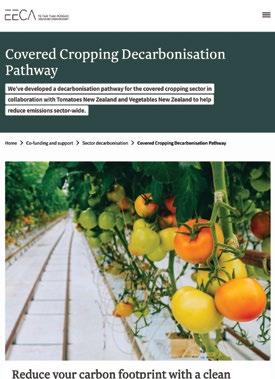
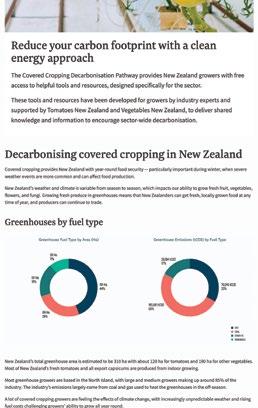
• Planning is progressing for the Horticulture Conference in Christchurch on 1 – 4 August 2023. This will be an industry wide opportunity to get together, network and learn. The TNZ Annual General Meeting (AGM) will be part of this event. We are keen for growers’ input on what topics you would like covered and what speakers you would like to hear from to ensure there is relevant content and presenters.
Please email your thoughts to dinah.cohen@hortnz. co.nz so we can use them in our planning.

TomatoesNZ also has drafts of two energy transition reports, partly funded by the Energy Efficiency & Conservation Authority (EECA) and the Horticentre Charitable Trust. These provide a comprehensive guide to the options available for non-carbon energy
The Environmental Protection Authority (EPA) has put together a series of guidance to help you with the industrial allocation process.
Part one will explain industrial allocations and how to set up an account in the New Zealand Emissions Trading Register (Register). Part two will guide you through the application process. Part three will explain how to transfer units in the Register and what records you need to keep.
Part one: what are industrial allocations?
The Government provides allocations of emission units for activities that are emission-intensive and trade-exposed. This is called industrial allocation. It recognises that New Zealand Emissions Trading Scheme (ETS) costs might affect the international competitiveness of some businesses.
If you produce fresh tomatoes, cucumbers, capsicums and cut roses you may be eligible for an allocation of New Zealand Units (NZUs).
Growers in the horticulture sector don’t have an obligation to report their emissions or surrender NZUs under the ETS. But if you are a New Zealand based grower you could be eligible to apply for an industrial allocation of NZUs, based on the type of crop you produce.
These specific growers are eligible because they’re emission -intensive and trade exposed. This means that, because of the ETS, they face an increase in the cost of powering (i.e., heating) their greenhouses. But due to international competition, they’re not able to pass these increased costs on to their customers.
The Government has attempted to mitigate this cost by giving an allocation of NZUs, which a grower can then sell or use to pay for energy costs (for example, with a coal provider).
Industrial allocations are calculated using production data, as opposed to your actual power costs. This is to incentivise the reduction in emissions by sustainable or renewable power sources which don’t have an ETS cost.
As a grower, this means you’ll continue to receive an allocation, even if you’re using more sustainable options.
We know this is a busy time of year. However, if you open an account in the New Zealand Emissions Trading Register (Register) now, you’ll be ready to apply for your industrial allocation from 1 January 2023.
Applications for industrial allocations need to be submitted in the Register and completed between 1 January and 30 April each year. Once your application is received it will be processed, and you’ll receive the units within 20 working days of your application.
1. Check if you’re eligible for an allocation on the EPA’s website: www.epa.govt.nz.
You’ll find information on how to apply, application types and a demonstration video on applying for an allocation.
2. Login or sign up to the Register at: www.emissionsregister.govt.nz.
If you’re using the Register for the first time, you’ll need:
• A RealMe login
• A drivers’ licence or passport
3. When you’re ready to make your application: log in to the Register, go to your organisation's account and select ’ETS Activities’ from the left-hand menu. Select 'Industrial Allocations’ and start your application.
If you need help, part 2 of this series will guide you through the application process.
New Zealand potato growers across the country have continued to navigate Regional Plan Changes, restrictive government policies, ongoing pest challenges, weather events and the rising costs of production.
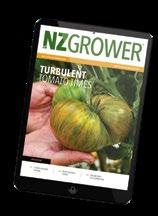
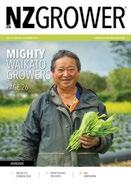

Through it all, growers have continued to deliver the best New Zealand grown potatoes to our markets and produce the best New Zealand potato products.

Data from 2021, presented in our Annual Report, shows minimal impact after a rough couple of years. The overall value of the industry, including the domestic and export markets, dropped slightly to $1.095 billion.
The domestic market dropped slightly from $1,054,857 to $993,447 in value.
The sustainability challenges for our industry include: how to remain viable during the roll-out of government policies; adapting to climatic changes; mitigating impacts from extreme weather events; managing pests and disease; all whilst maintaining economic vigour.


Most farmers are aware of the challenges on their own farms, as we’ve heard at the PNZ grower insight meetings held this year. Potatoes NZ visited Pukekohe, Canterbury and Palmerston North throughout 2022 to ensure we stayed abreast of current challenges and heard directly from our potato growers.
Although the pandemic resulted in a biennial conference being cancelled, we continued stakeholder engagement with smaller regional events to update industry on our activities.
The solutions to industry challenges are being sought in our research and development programme.
Throughout 2022 the pressures on our industry have remained, despite the pandemic disruption abating.
The NZ Potato Growers’ Levy is only spent on research, development and extension (RD&E) activities, as directed by growers at the time of the last levy vote in 2019.
In the last year $1.9 million was spent on RD&E. There are currently seven projects on the go:
PNZ-84 Canterbury Potato Liberibacter Initiative (CPLI)
PNZ-84 CPLI-1 Contact resistance
PNZ-84 CPLI-2 Systemic resistance
PNZ-84 CPLI-3 Biological control Post Doc
PNZ-84 CPLI-4 Systemic acquired resistance
PNZ-84 CPLI- 5 TPP Lure Masters
PNZ-84 CPLI-6 Calcium propionate
PNZ-84 CPLI-7 Border plantings
PNZ-84 CPLI-8 Bioassay
PNZ-84 CPLI-9 Spray Technology Review
Potato Tuber Moth Programme
PNZ-82 Potato Tuber Moth phase 1
PNZ-90 Potato Tuber Moth Project phase 2
PNZ-92 Potato Tuber Moth Trapping Programme
PNZ-79 Sustainable Vegetable Systems (SVS) Programme
PNZ-91 Crop residues
PNZ-28 Potato Breeding Programme
PNZ-78 Agchem Strategy
PNZ-80 Powdery Scab
PNZ-89 Gross Margins Project
PNZ-81 Fiji Quality
The biggest programmes, Canterbury Potato Liberibacter Initiative (CPLI) and Sustainable Vegetable Systems (SVS), address both sustainable quality and environmental sustainability. CPLI
The new CPLI programme launched in November 2021 extends the previous work of Plant & Food Research (PFR) Institute’s psyllid projects. It is led by the newly formed Canterbury Psyllid Liberibacter Initiative (CPLI). CPLI is a collective of like-minded farmers and industry representatives wanting to combat the devastating impact of the Liberibacter (Lso) bacterium which causes zebra-chip in potato crops.
CPLI is funded with a special Canterbury grower/processor levy and in-kind support from Potatoes New Zealand.

Research from the programme will be shared with the whole of industry.
The work is being undertaken both at PFR and by Lincoln University Masters students, on growers’ properties. This all builds on the previous projects which examined spray programme, degree day monitoring and psyllid behavioural research.
Read more about CPLI here: https://potatoesnz.co.nz/rdproject/canterbury-psyllid-liberibacter-initiative/ SVS
The Sustainable Vegetable Systems Programme is in its third year and is making great progress towards improving tools and guidelines for the New Zealand vegetable sector’s nitrogen management.
SVS is funded by the Ministry for Primary Industries, led and co-funded by Potatoes New Zealand in collaboration with the Vegetable Research & Innovation Board and Horticulture New Zealand.
SVS is a $7.5 million-dollar national project, spread over four years, and has multiple workstreams.
The programme outputs include providing analysed trial results and subsequent modelling of the vegetable nitrogen system. This is presented as nitrogen budgets. PFR is conducting the field, laboratory and modelling research. Trials and monitoring take place both at PFR and on growers’ properties.
There has been significant social science conducted by PFR and research company FOLKL, to ascertain the level of problem recognition within the industry and to engage growers in collaborative tool development.
Overall SVS programme aims:
• To maintain the vegetable and potato industries’ social licence to operate.
• To protect the ability to grow, process and sell, while meeting environmental standards.
• To ensure industry access to land, water and nutrients through national, regional and farm programmes in order to achieve industry growth.
SVS overview and activities videos are short and sweet and can be viewed on the Potatoes New Zealand YouTube channel here: https://www.youtube.com/channel/ UCnCtba8OAkK_ZA2MA6wQc4w/videos
The Potato Tuber Moth programme is also underway, with phase one completed and trapping managed by Daniel Sutton of Fruitfed in the Franklin district. Weekly reports
are texted to local growers and are also available on PNZ’s website: https://potatoesnz.co.nz/ research-and-development/ptm-reports/
Potatoes NZ and VNZI have made a joint submission to the government on He Waka Eke Noa and the emissions tax/levy proposal. It is a PNZ policy that we leave policy activities to the HortNZ team, unless directed by our growers to develop our own industry specific submission. In this case, we were given a strong mandate by growers to represent the interests of potatoes and the vegetable sector.
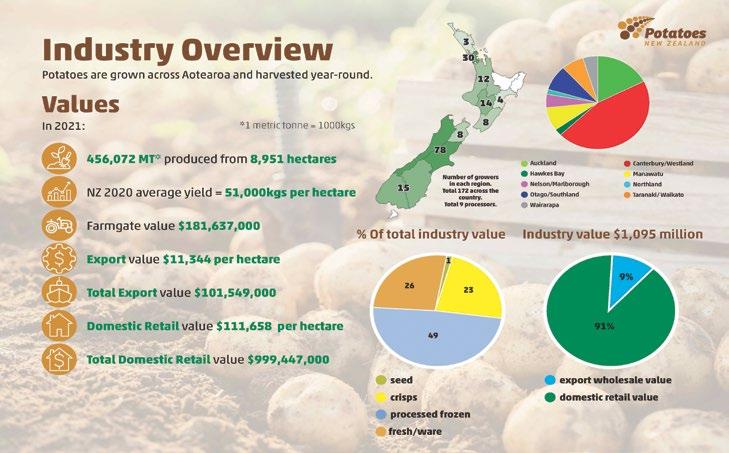
Being in service to the New Zealand potato industry is the driving force behind our work at Potatoes NZ Inc.
Our draft 2023 Strategy and Plan will be presented to the board in November and signed off in February. We encourage levy payers to contact our team or the board with any input on our direction.
We will be engaging with growers in the curation of the 2023 conference programme, to ensure we deliver a useful event and excellent social occasion.
We wish all our growers, processors, agronomists and the wider industry a merry Christmas and a very Happy New Year!


Field days are a great way to share information and knowledge in a hands-on way. However, movement of people, goods and vehicles between farms/orchards during a field day can present a biosecurity risk. Pests or pathogens can inadvertently be carried: onto the host’s property back to the attendees’ property.
Implementing simple everyday biosecurity practices can help to minimise the biosecurity risk for both hosts and attendees, which is a great outcome for all.
Include biosecurity messaging on promotional material and in communications with host properties. Minimise the number of vehicles and use transport that is not usually used on the farm/orchard if possible. Keep a register of all attendees to ensure tracing is possible if required. Avoid visiting properties that are known to have high risk pest, pathogen or weed infestations.
Make sure good biosecurity practices are visible on your property. Provide a biosecurity briefing about the actions you’d like visitors to take so that attendees know what you expect of them. Ensure that you have a designated and clearly signposted parking area. Provide a footwear wash and disinfection station at the point of entry e.g. boot scrubbers and water for cleaning, sanitising spray or a footbath containing an appropriate sanitising product for disinfection. Provide hand sanitiser if people will be touching plants or soil. Avoid use of other people’s tools and equipment for demonstrations, unless they have been thoroughly cleaned and disinfected first. Monitor the part of your property where the visit took place over time for unfamiliar pests, pathogens or weeds.

you are an attendee:
Make sure your clothing and footwear is clean. Avoid wearing clothes and shoes that you wear on your own farm/orchard. Clean and disinfect your footwear between each site during the field day and before returning to your own farm/orchard. Follow all biosecurity signage and requests at host properties.

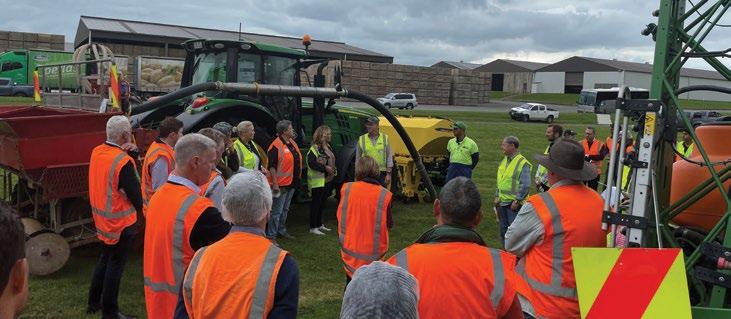

Vegetables New Zealand Inc (VNZI) is a grower information organisation. For it to be effective in its operation and output, growers need to trust the organisation to collect and use the most upto-date grower information to enable growers to do what they do best – grow.
Information systems are widely talked about as intrusive and compelling. However, it has become a necessary part of our era and we all subscribe to them in some form or other whether it is cell phone use or filling out forms for tax, GAP certification or levy data. The critical issue with any data technology is, do you give permission to use that data for a given purpose and is that data secure?
VNZI is mindful of this issue and understands that if data collection operates on a high-trust model, then growers need to have confidence in the system’s purpose and delivery. For this reason, VNZI will only consider collecting
grower data where it has a purpose to advance the benefit of its grower members. Only aggregated data will be communicated to external sources, and only for some purpose that supports the general good of all vegetable growers.
We are at a crossroads of data operability. You can empower government to collect your data, or you can give permission to your membership organisation to do this on your behalf.
There are costs and benefits to both approaches. Both central and regional government is keen on gathering data. If left to their own devices, they will build a big system to capture it. If what results is one data system that ‘rules them all,’ it is likely to be used for more than its intended purpose. The ratio of cost to proportionate benefit will likely also be out of whack. This will be hard on smaller growers with a high administrative burden.
The solution to a government data grab is founding industry data schemes. Your grower membership organisation is already collecting grower information with a grower levy. The trust model begins and ends with using the levy information wisely to meet the request for information from central and local government. Product groups are seeking levy information on:
• Name and address (membership)
• Location of produce
• Volume of crop
• Value of crop
Member engagement – lip service or the genuine article…
VNZI is working on a better engagement model. While our current database for keeping track of VNZI members is an adequate method of storing names and addresses, it is outdated and no longer fit for purpose as a modern grower membership system.
What is needed in today’s dynamic data environment is a customer relationship management (CRM) platform. A CRM platform is a lynch pin in grower engagement. Without a robust CRM system, VNZI struggles to build grower mandate to fight policy positions.
The framework to support the CRM system is shown in the Vegetable Sector Policy Strategy as the base layer; that is, managing vegetable sector data.
Information is the foundation for developing good policy positions, supported with appropriate engagement.
Trust your organisation, Vegetables New Zealand, to be your voice and support them with good, sound information.
VNZI is a grower membership trust model enshrined in the Incorporated Societies Act:
1. Societies are organisations with members who have the primary responsibility for holding the society to account; and
2. Societies should operate in a manner that promotes the trust and confidence of their members; and
3. Societies are private bodies that should be self-governing in accordance with their constitutions, bylaws, and their own tikanga, kawa, culture, and practice, and should be free from inappropriate Government interference; and
4. Societies should not distribute profits or similar financial benefits to their members.
Figure 1. Framework to support the Vegetable Sector Policy StrategyIt has been a tumultuous year for economies around the world. The effects of climate change and the war in Europe have led to increased pressure on global food systems and concerns for food security.
The export season has been challenged by production and supply chain logistics, and major onion growing areas across the country have experienced variable weather on either extremity of wet or dry. Shipping delays, port access, and turn-around times were major pain points for the industry, ultimately increasing the price of shipping and competition for containers.
Sustained and new market access remains a priority to support the sector through a volatile global trade environment. Diversification of markets reduces the risk and high reliance on main markets, should trade be disrupted.
Free trade agreements (FTAs) are a framework that industry can use to support international trade and the business relations between two or more countries. As an exporting sector, the way New Zealand onions trade and continue to improve trade is guided by these economic frameworks.
This past year (2022) has been a successful season for market access for the New Zealand sector with the signing of two major free trade agreements with the United Kingdom and the European Union. When these FTAs are enforced, it will allow increased trading and more competitive trading and negotiation for onion exporters.
Update on the market access FTAs and other trade frameworks supporting the New Zealand Onion Sector:
2023)
The NZ-UK FTA concluded in early March 2022 includes the elimination of an eight percent tariff that will come into
force upon ratification. Although the ratification process is ongoing, the hope is that FTA outcomes will be in place for trade by next export season.
The United Kingdom FTA Legislation Bill had its second reading on 26 October 2022. The legislation is at the report stage in the United Kingdom House of Commons, which will be followed by a third reading. Once both New Zealand and the United Kingdom have completed their ratification processes, the FTA can enter into force.
The European Union (EU) is the number one market for New Zealand onion exporters, with 65,000 to 88,000 tonnes of onions exported there in the last decade –approximately 40 percent of the New Zealand onion sector’s export value.

On 30 June 2022, the signing of the NZ-EU FTA was announced. The result has been a 99.9 percent tariff elimination for horticultural exports on day one. This will see the removal of a 9.6 percent tariff on onions and a $6.5 million tariff relief for the sector, putting New Zealand on level footing with other competitors.
Market access for fresh onions into Thailand has been restricted over the last few years due to a regulation put in place that required imported New Zealand onions to be used only for processing. After a lengthy campaign, the regulation was removed by the Thai Cabinet in February 2022, and in late May 2022 full market access for New Zealand fresh onions was restored to Thailand. The industry has responded immediately with successful shipments soon after implementation.
The ASEAN Australia New Zealand Free Trade Agreement (AANZFTA) is one of New Zealand’s most valuable FTAs and is currently going through an upgrade, with the most recent meetings being held in Viet Nam in October 2022.
As of calendar year 2021 export value in NZD (FOB)
Existing and new potential growth markets for New Zealand onion exporters 1 Indonesia
Markets with existing marketing access, non-tariff barriers and trade development issues for New Zealand Onions
China
Philippines
Viet Nam
Thailand 2 Germany
Malaysia
Netherlands
South Korea
Indonesia
Indonesia
EU (Germany and France)
Taiwan
Bangladesh
North America 6 United Kingdom
United Arab Emirates
Singapore
Fiji
Spain
Japan
Taiwan
Canada 8 France
India
Malaysia
Papua New Guinea
In May 2022, Prime Minister Jacinda Arden joined 12 other leaders from the Indo-Pacific countries to announce the negotiations of the Indo Pacific Economic Framework for Prosperity (IPEF). The scoping phase for the IPEF concluded during discussions in Los Angeles in September 2022, initiating the start of negotiating rounds.
The pillars for discussion are trade, supply chains, clean energy, decarbonisation, infrastructure, tax and anti-corruption.
Gulf Cooperation Council (GCC) (New
Free trade agreement negotiations between New Zealand and the Gulf Cooperation Council have resumed this year from text previously agreed in 2009. This is the start of a framework for trade and business between New Zealand and member countries Bahrain, Kuwait, Oman, Qatar, Saudi Arabia and United Arab Emirates; countries which have imported New Zealand onions intermittently over the past two decades.
United Arab Emirates
Brazil
Taiwan
Following RCEP’s entry into force in January 2022, focus remains on full implementation of the Agreement and its benefits. The member countries involved are the 10 members of ASEAN, along with Australia, China, Japan and South Korea.
This agreement aims to give a single set of rules to exporters trading within the region, reducing compliance costs and allowing non-tariff barriers to be addressed more effectively.
As a large exporter, the onion sector benefits from the security of a global trade system, but with predictability a thing of the past, the sector needs to be proactive. The frameworks here are tools we can use to preserve and gain new market access.
If today’s events are any prophecy for the future, challenges in the global market will increase. Doors will open and close, but opportunities may arise. Recognising the shifts and improving the tools to respond to challenges will enable the industry to make the best use of these opportunities.
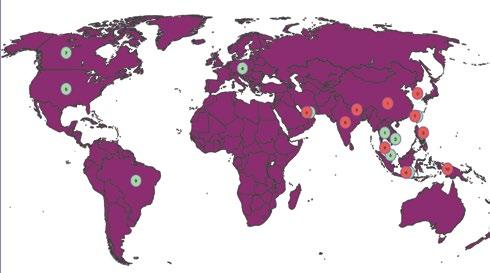
With over 30 years of furniture and homewares product development, design, contract manufacturing and procurement, Haven Distributing’s Commercial Division provides the best quality and fully safety compliant bunk and bed options for seasonal worker accommodation.


Haven’s products are acknowledged by seasonal accommodation providers, backpackers, holiday parks, council-operated and student accommodation facilities. Haven is the product developer, importer and distributor of commercial furniture and mattresses, and is well known for its consistent high-quality products and service, and full safety standard compliance of products designed for commercial use.
Haven’s bunk beds comply with the AS/NZS safety standards, providing a level of safety awareness and minimising risks, and the importance of using only fully compliant and certified bunks in accommodation facilities cannot be understated.

The AS/NZS 4220:2010 bunk safety standard covers Australia and New Zealand, and was further enhanced with the introduction of the accommodation industry Handbook Standard (HB393:2011) in 2011, providing additional specifications and guidance for short-term accommodation providers relating to the purchase, installation, maintenance and the use of bunk beds in facilities.
The standards include many specific and detailed design and manufacturing requirements and approval processes. Haven’s products comply and are fully certified to these standards, giving accommodation providers peace of mind.
Haven Commercial offers an extensive range of safety compliant products to the commercial sector, providing a direct-from-source purchase at competitive prices, with nationwide distribution. “We look forward to helping growers and seasonal worker accommodation providers plan their sleep system requirements.”
For more information contact Roger or Scott Harris, Haven Distributing Co Ltd Commercial Division on 09 213 3024 or email sales@havennz.com



After many years of searching internationally for new variety options, Lefroy Valley are back in the market, stronger than ever, and ready to offer growers professional advice and recommendations on their extensive range of cauliflowers.

Now with a cauliflower for every planting window, key attributes of the new range are: well wrapped jackets, clean strong plants and firm white curd.

With maturity starting from 80 days all the way through to late maturity 170 to 230 days for the deep south region.
Varieties for sowing now until late May:
Variety Days Maturity* Approx. Harvest Guide
Blanco 80–100 late Mar-mid May
Ibanez 80–100 early Apr–late May
Clerc 85–105 late Apr–late Jun
Maestri 90–110 late May–late Jun
Pelous 120–135 late Jun–early Sep
Castel 125–130 early Jun–late Aug
Champ 125–135 early Jul–late Sep
Benazzi 135–150 mid Jul–late Sep
Darbos 145–155 late Jul–late Sep
*Maturity is dependent on region and season
For South Island varieties, call your local rep: Damon 021 884 680.
Lefroy Valley know cauliflower varieties and the cauliflower market.
For more information or advice, contact Lefroy Valley on 0800 LEFROY (533 769) or visit lefroyvalley.co.nz









Grow with Enza Zaden and share the journey to success.
others to succeed.
t o succ ee d d. .
r s and the ru
growers and the rural support trust, is more than money. It is a growth mindset and about helping
ul cro I
s om et hi ng
wi de r an ge of
successful crops. In the middle technical help, supporting regulation frameworks, supporting young
de n ha a s al l wa y ys f o oc ussed on. It s tart s wi th g re a ks su
p or ting you o ng
n N ew Zea la nd
is something Enza Zaden has always focussed on. It starts with great varieties and ends with












i et ie s, a nd k nowl ed ge from spr
at v ar ieties and ends wi th
en ab le s fa f mi l
a Za de n gi ves a re al i nd
o In t r
a wide range of varieties, and knowledge from a team spread across the globe. Supporting growers



In New Zealand Enza Zaden gives a real independent choice to growers with direct sales, access to








enables families and communities to thrive.

ti p of t he r es

d ac ross t he glo be. Su pporti ng g rowe rs

c om mu ni ti es t o th ri ve. indepen de nt c hoic e gro wers w it h di re ct s al es, ac ce e ss t o
pr od uc ts f o
ceber g. T hi s can be t he h d if ferenc e be b tw w











tip of the resistance iceberg. This can be the difference between feeding the world and hunger. It
et ab le c ro p
a l harv est an d gr ea a tl yl y im i p pr r
In no va ti ve
s ts , fu ngi an n d v vi i
products for mechanical harvest and greatly improved mildew resistance in spinach, are just the




etable crops against pests, fungi and virus.

TBFRV resistant tomatoes, Yellowing virus cucumbers,
Innovative technology to speed up traditional breeding has accelerated the resistance within veg-


s pe ed u p tr r a ad it i
process and the removal of 84 candles.
of 8 4 ca nd le e s s.
dl y ta st y tr e ea a t.
carotene, and is a gut friendly tasty treat. Carbon emissions will be reduced by the solar cooking
En E in 2 te ch ce c le b ca ro te pr oc es s
l ow N pum p pk k
celebration has evolved to a low N pumpkin cake, featuring naturally low sugar, high fi bre, high
r ow er s to o ve v
techniques for professional growers to overcome climate change to feed the world. The birthday




in 2023. Winning the Hillengrad Award for best Dutch agricultural company and develop new


d Aw ar d fo r
c es w er s s in ce f ou n nd d in n

















Enza Zaden celebrates 85 years since founding the company and will hire the 3000th employee